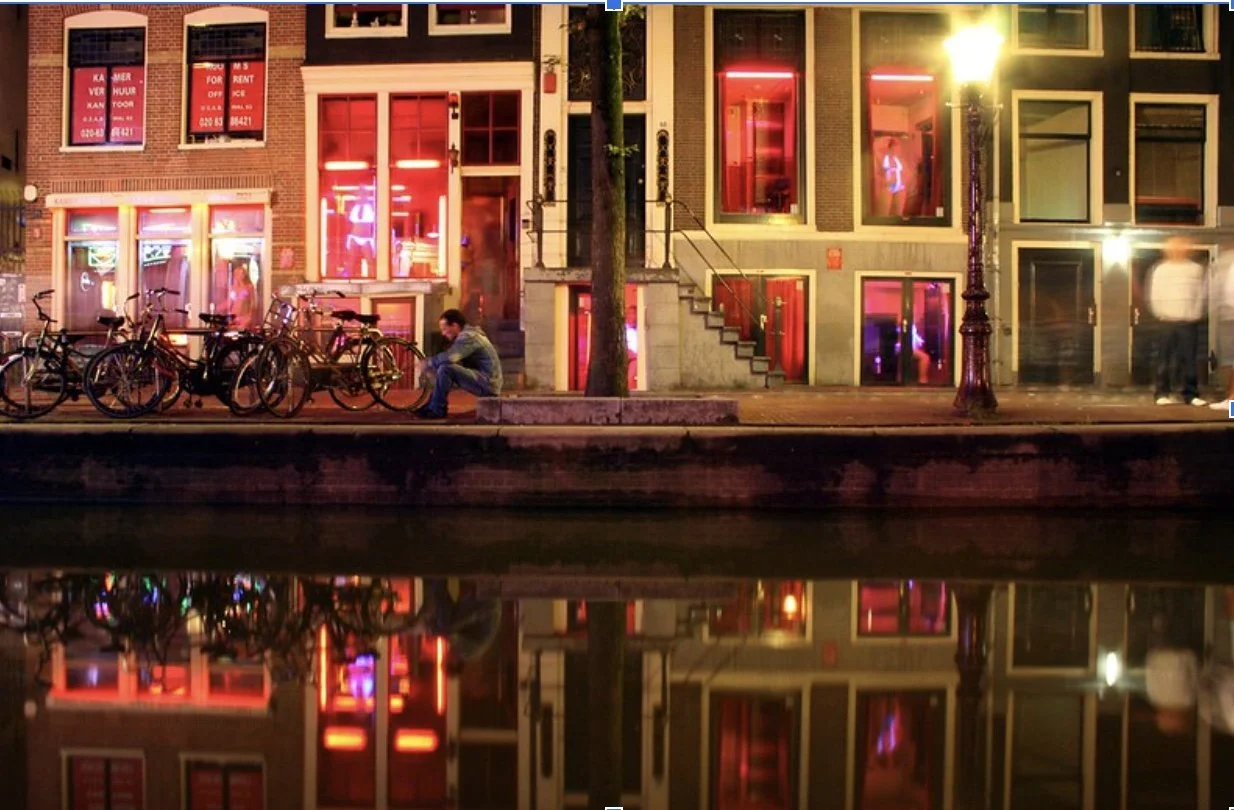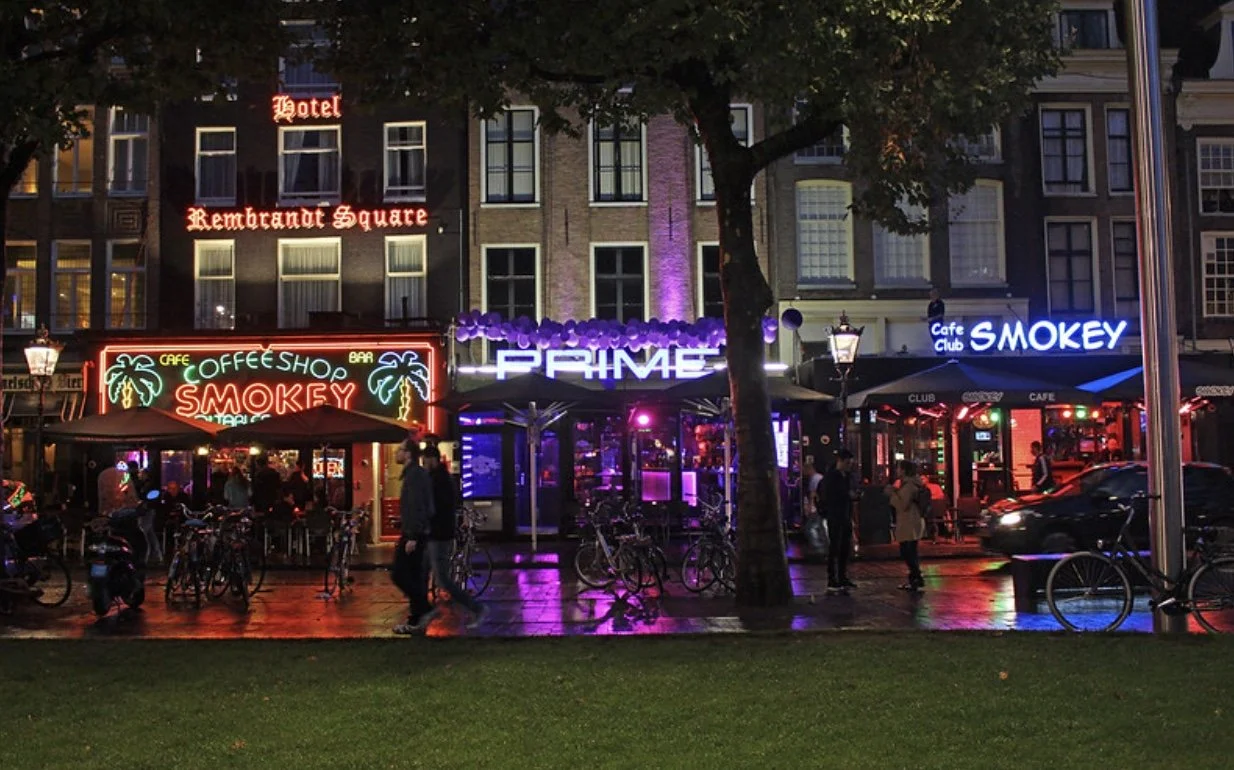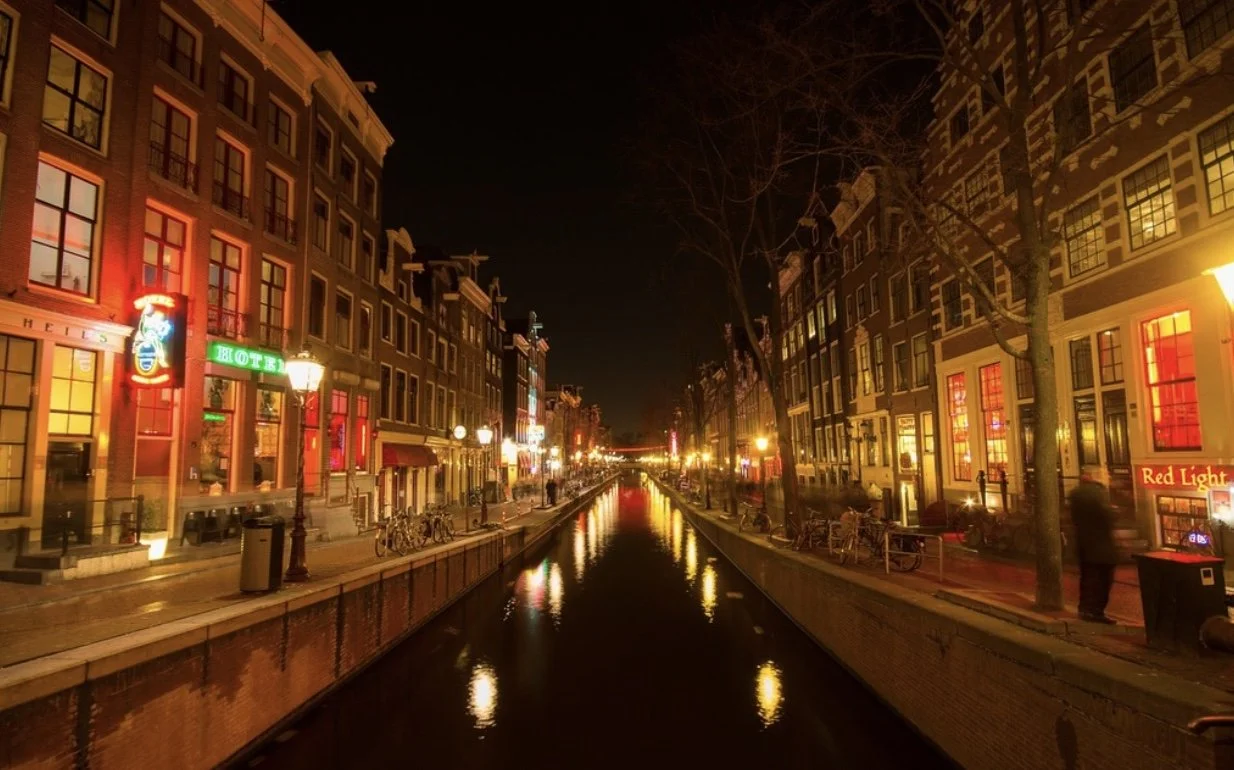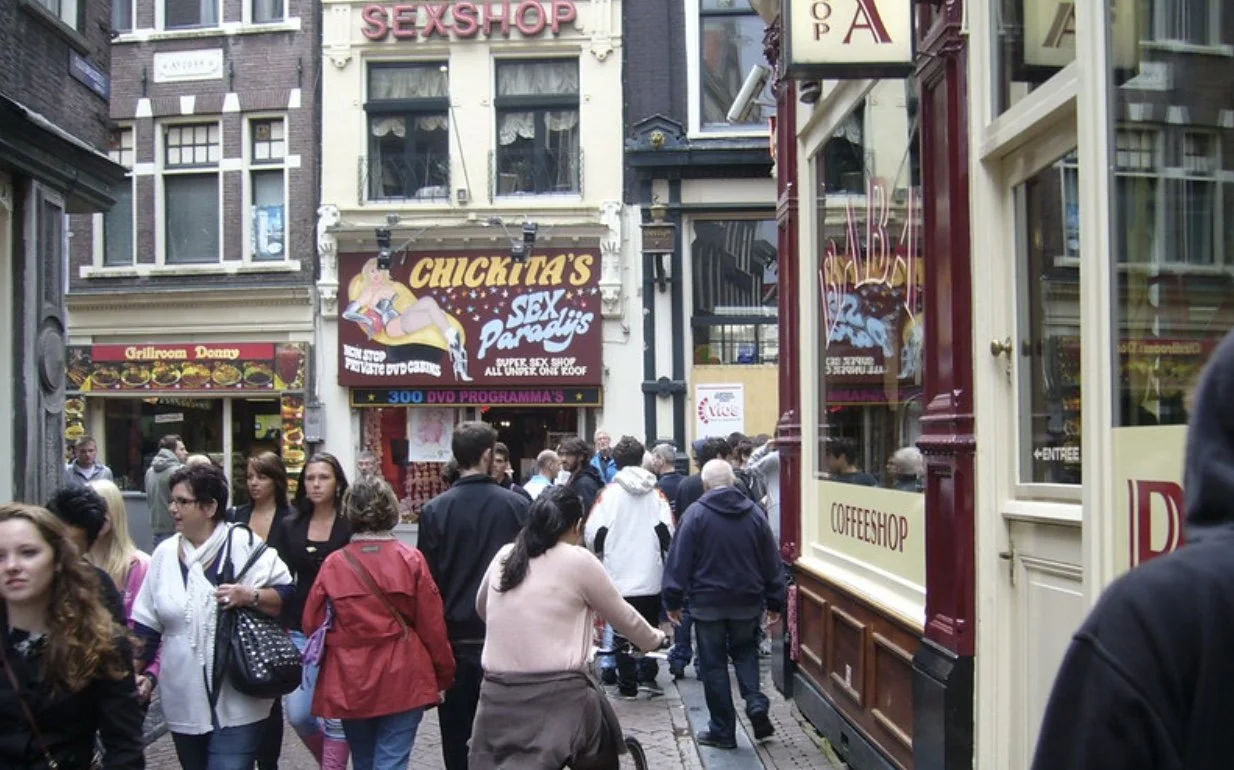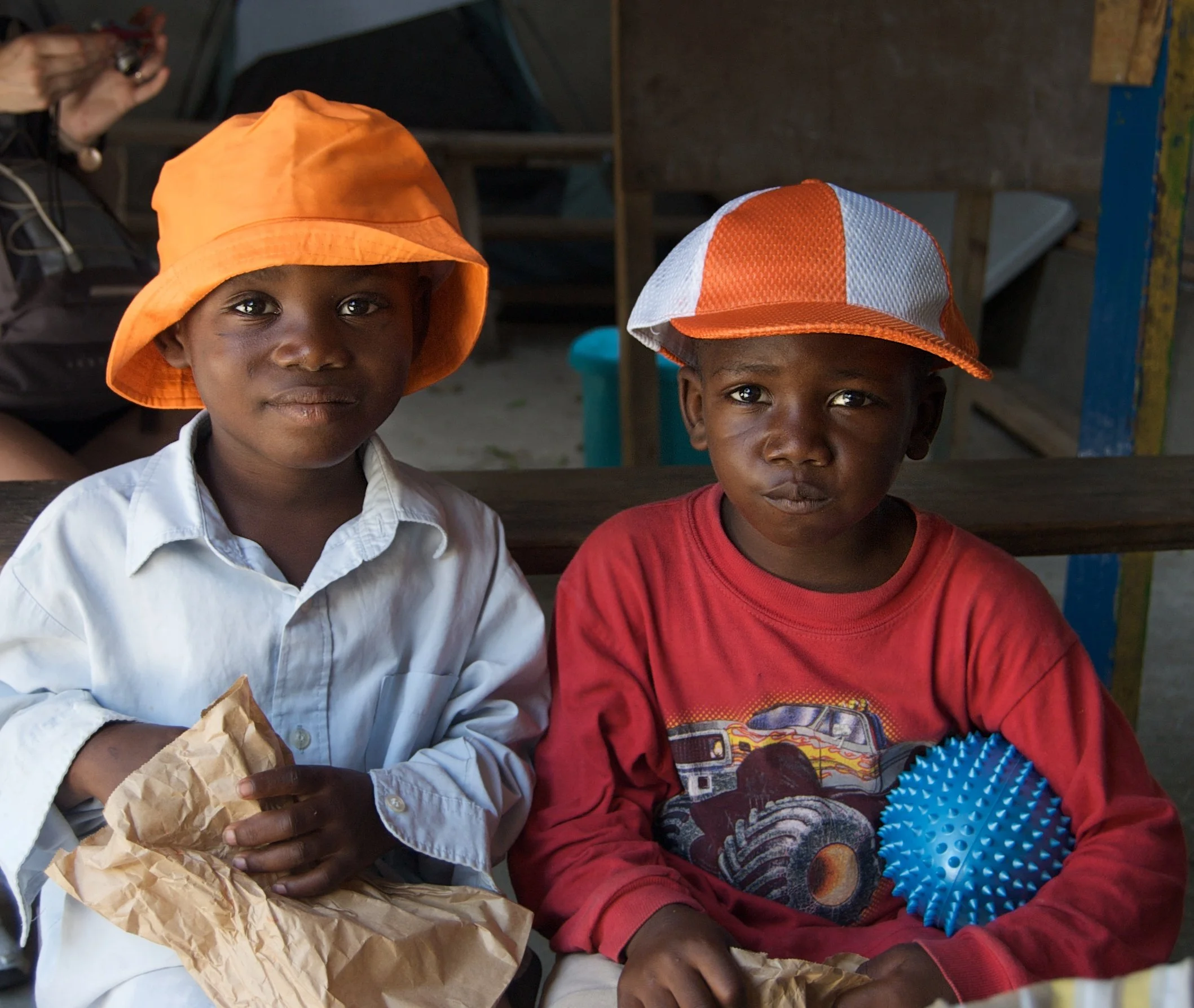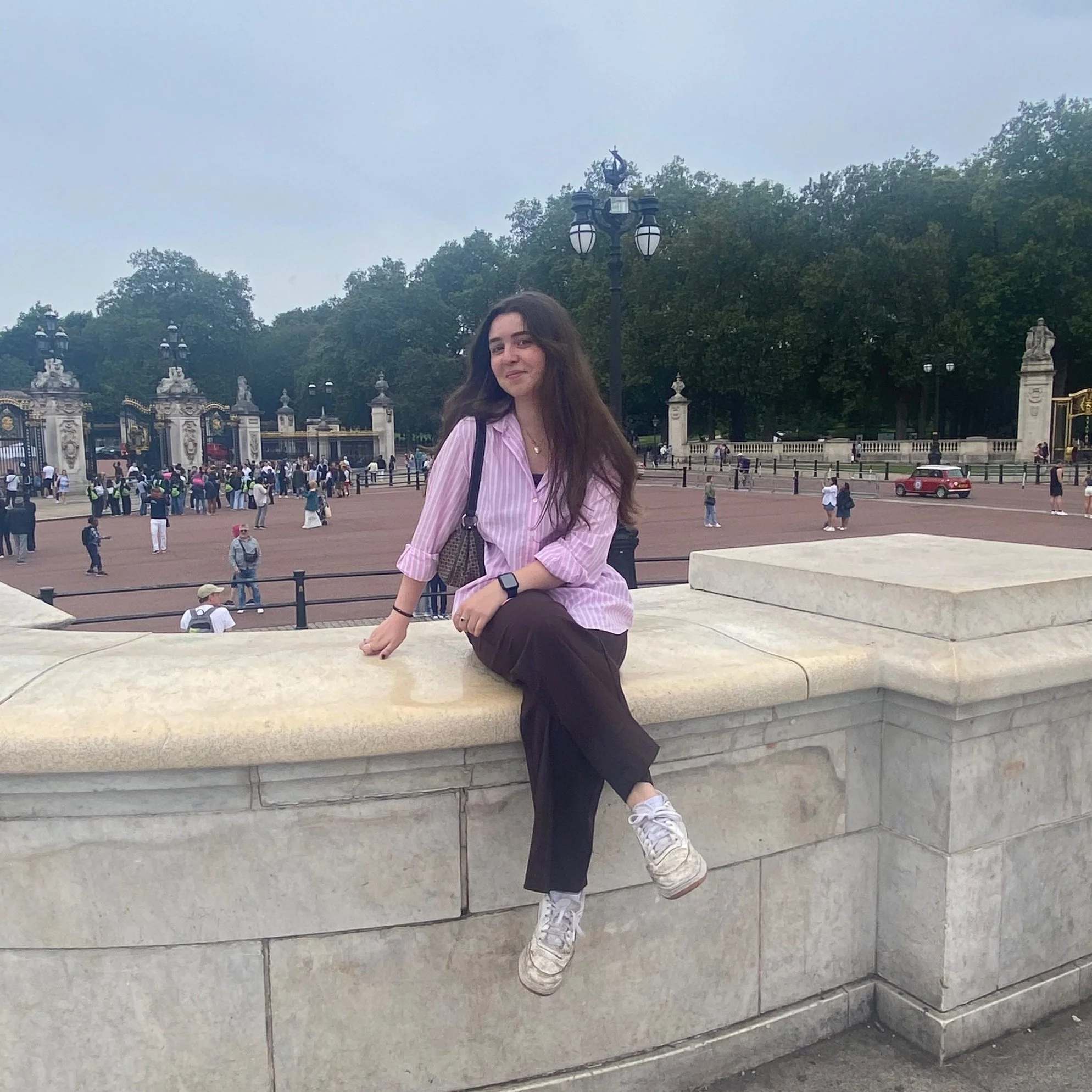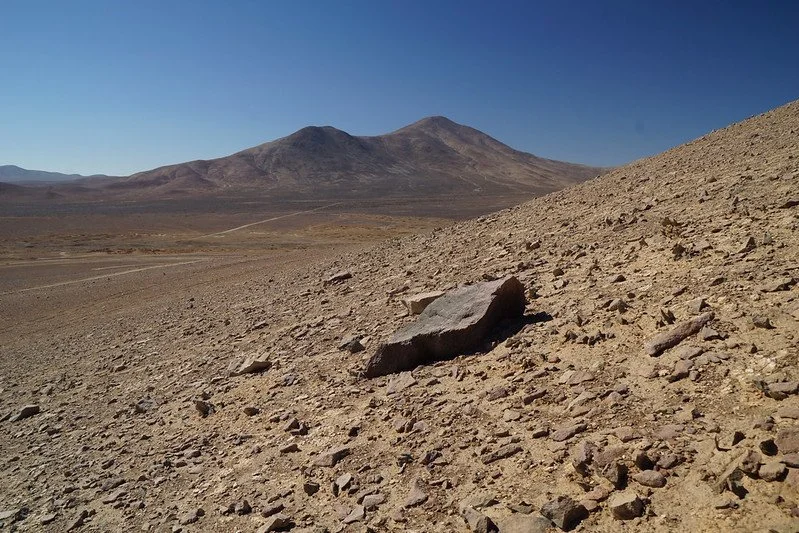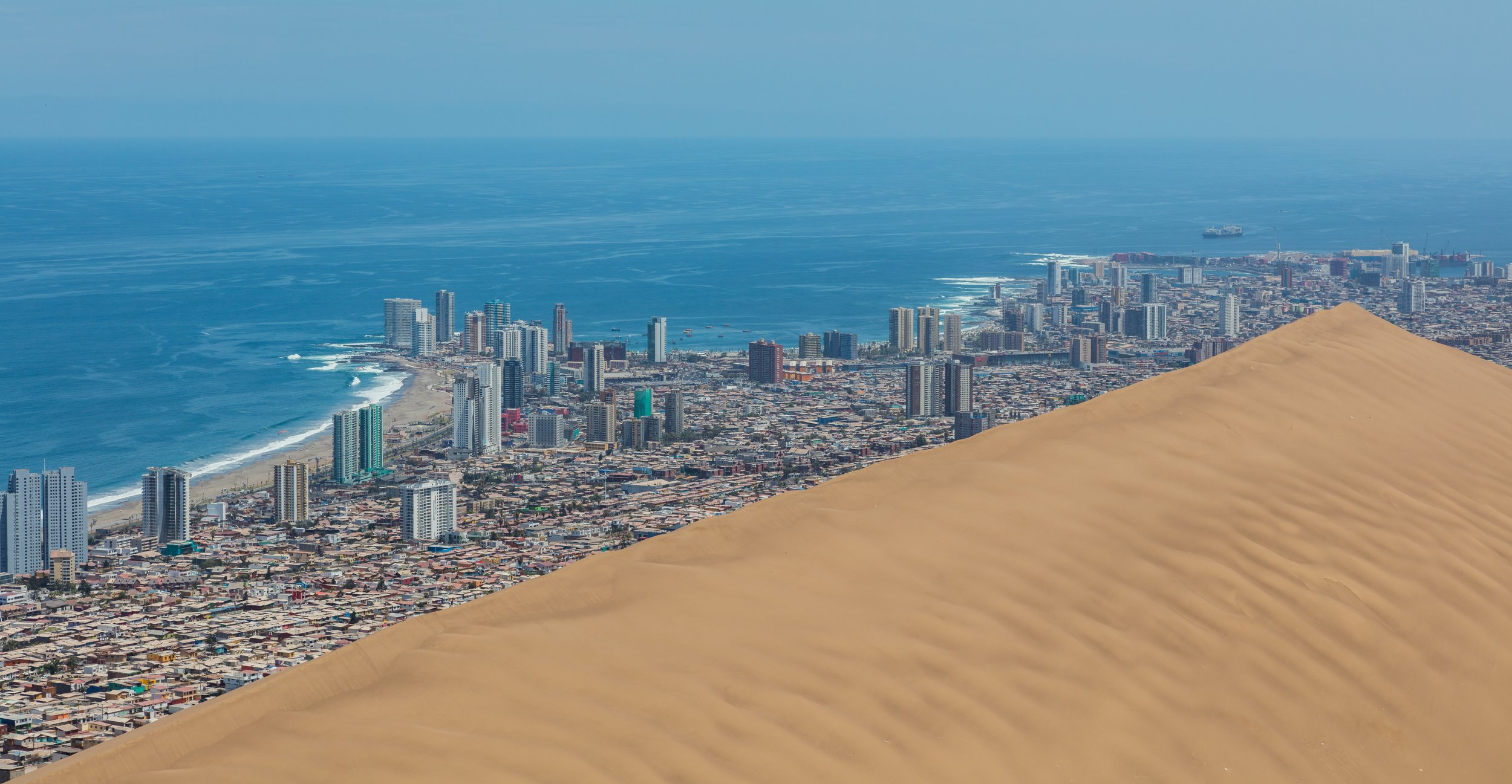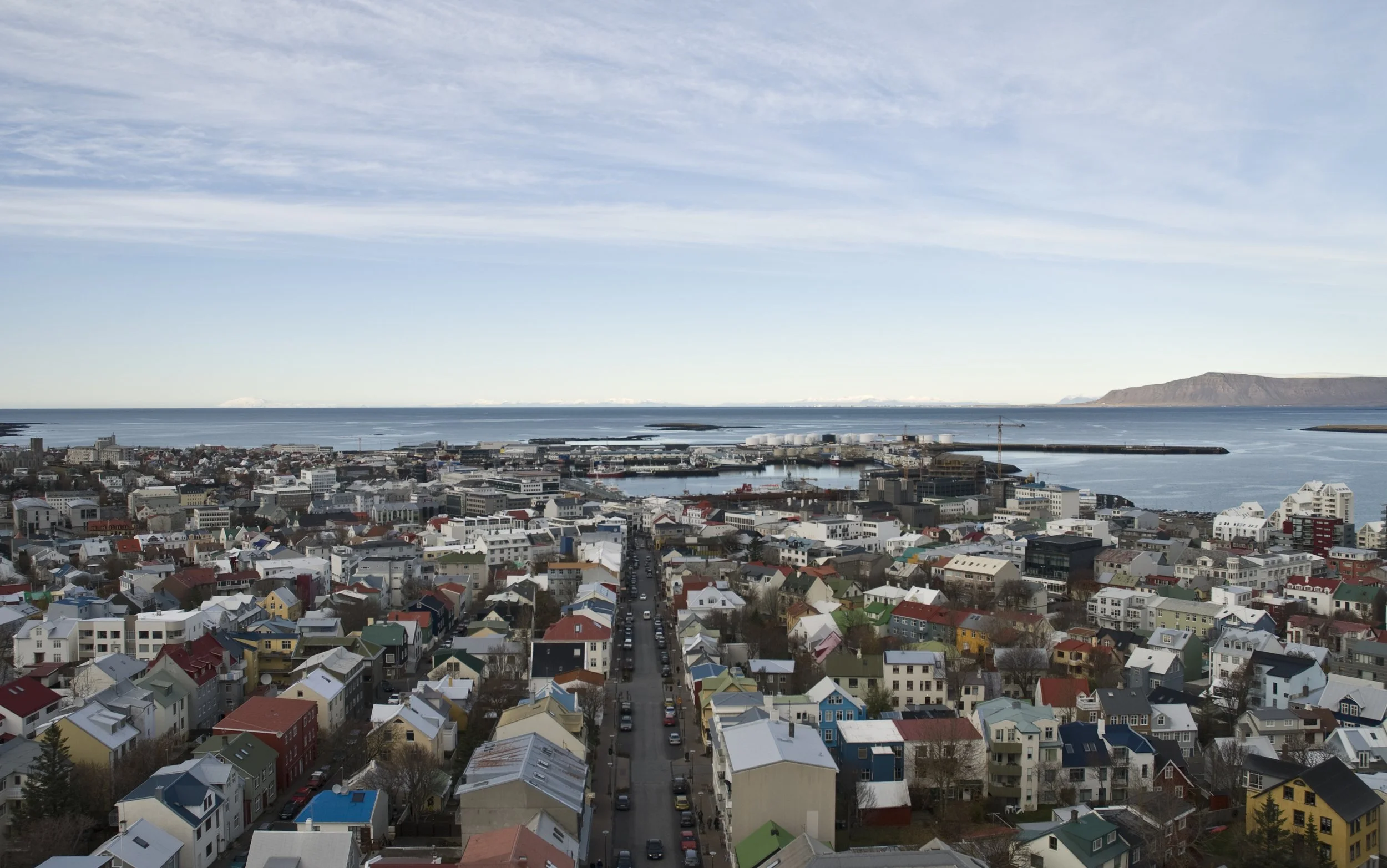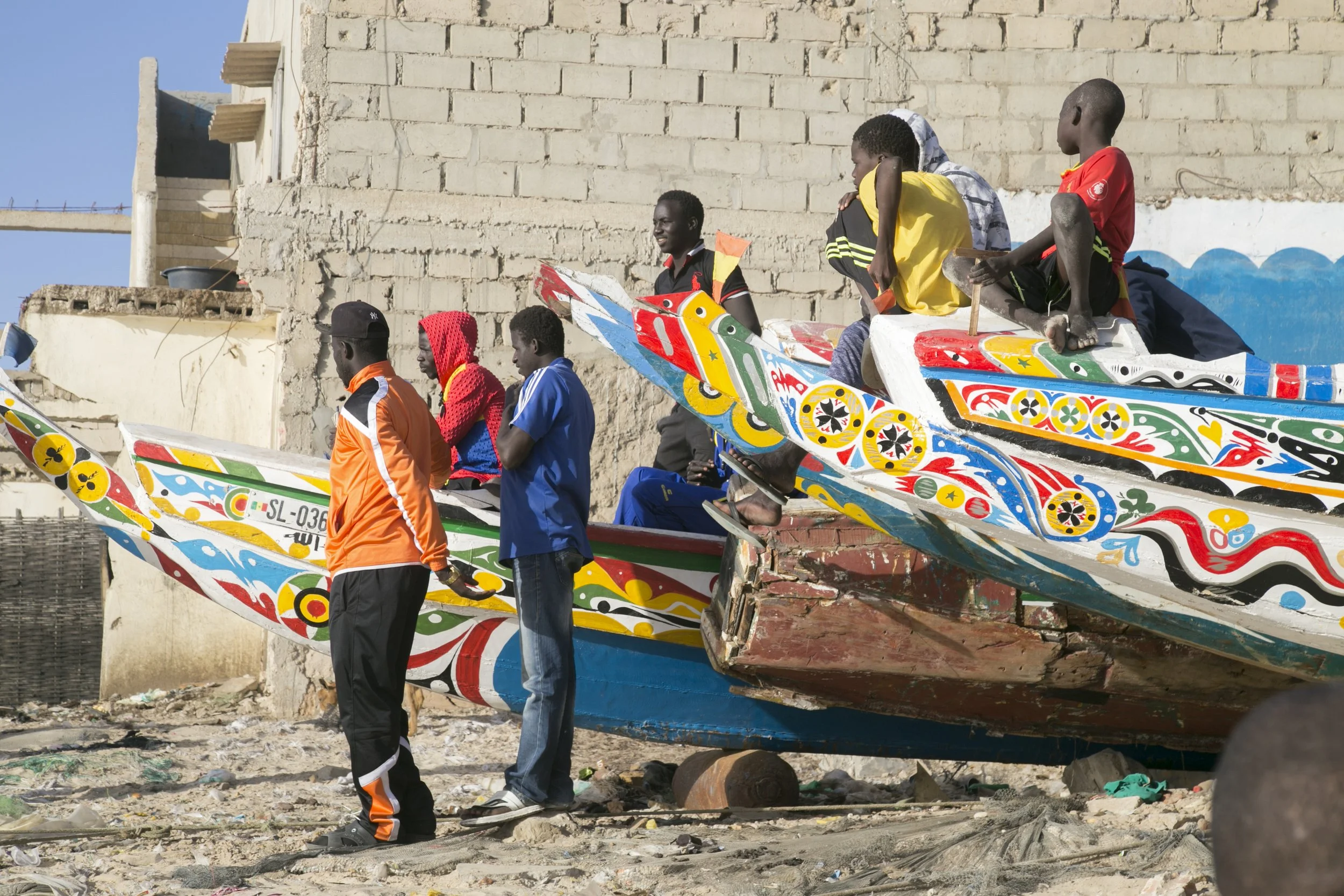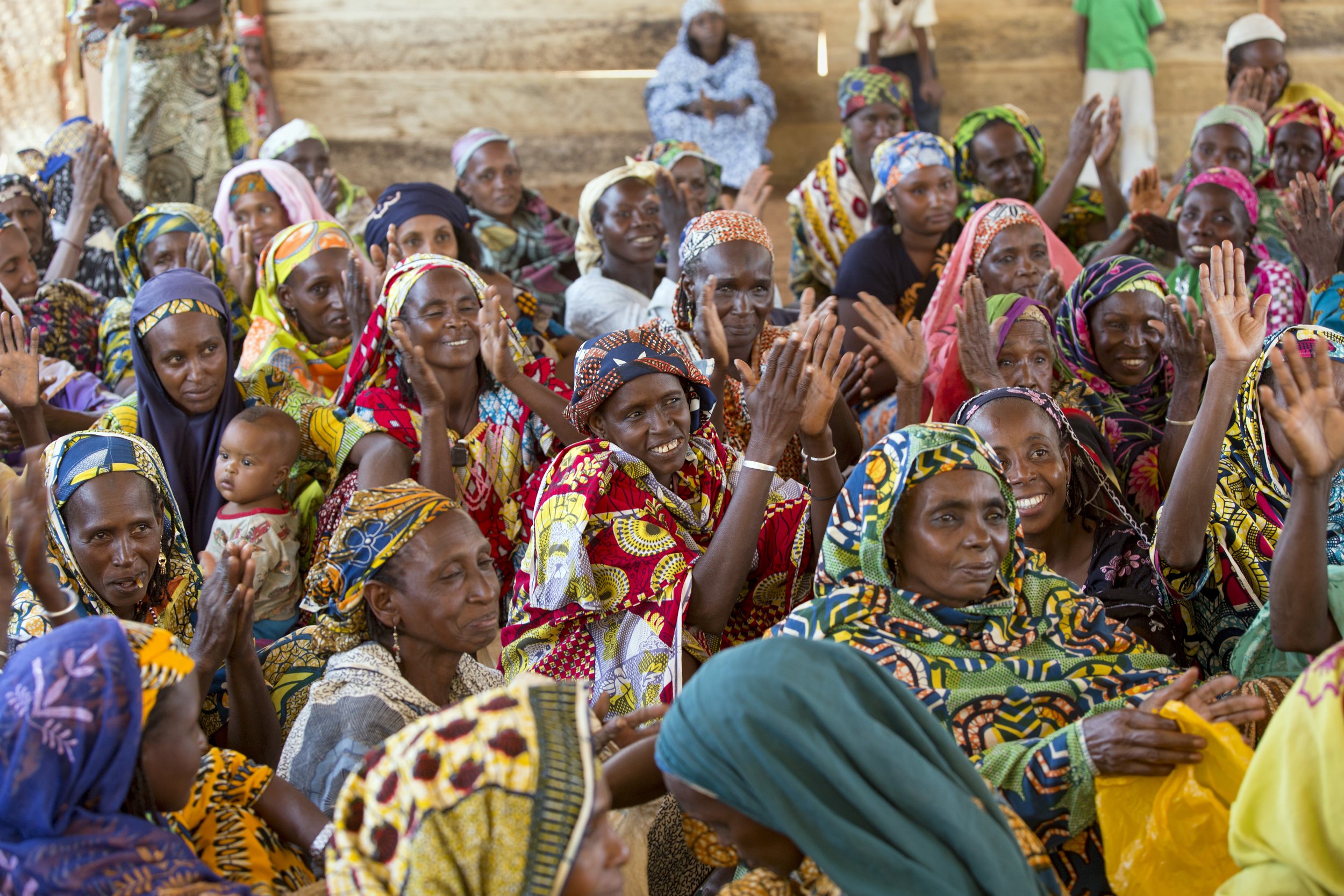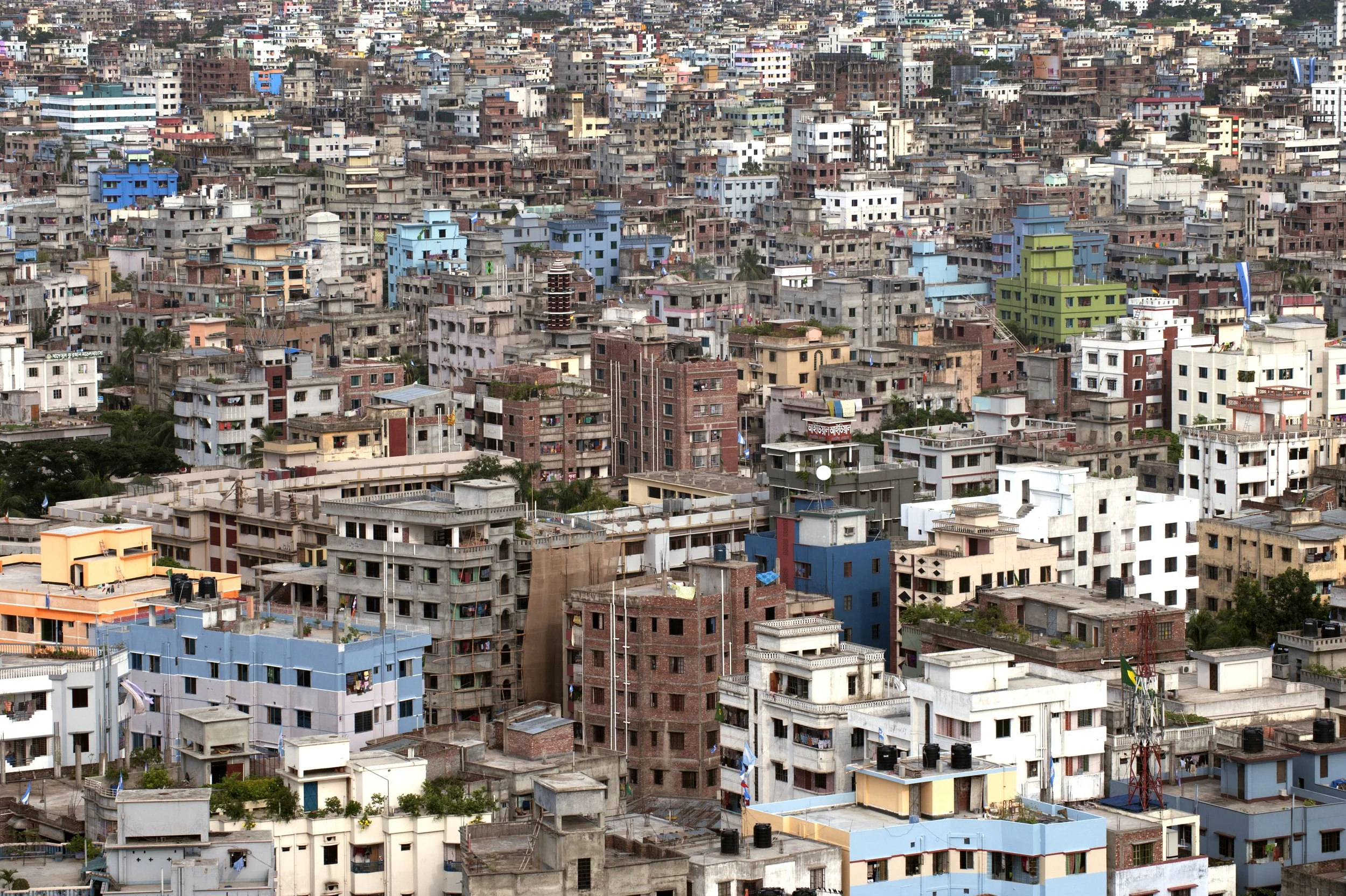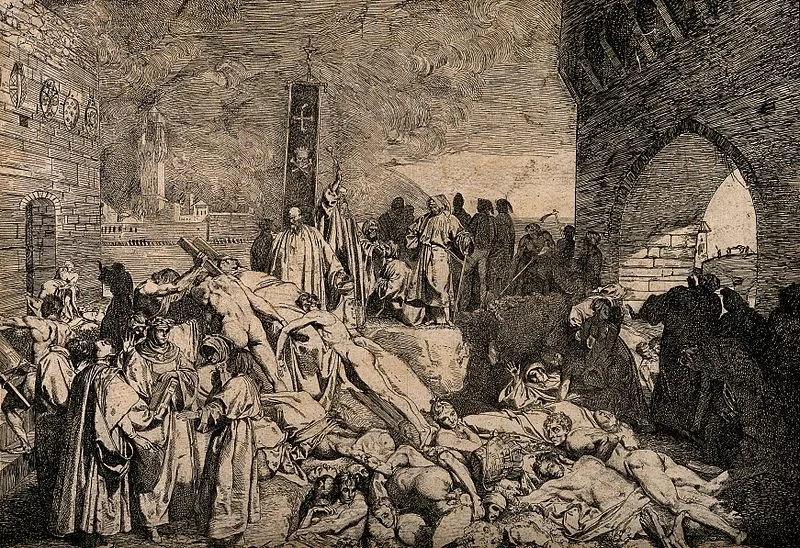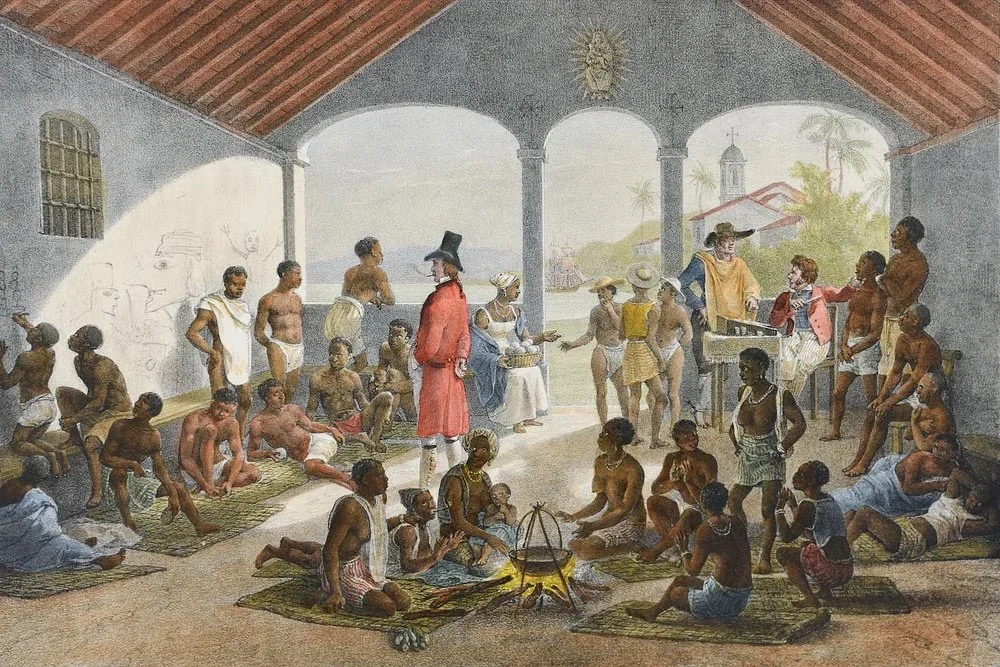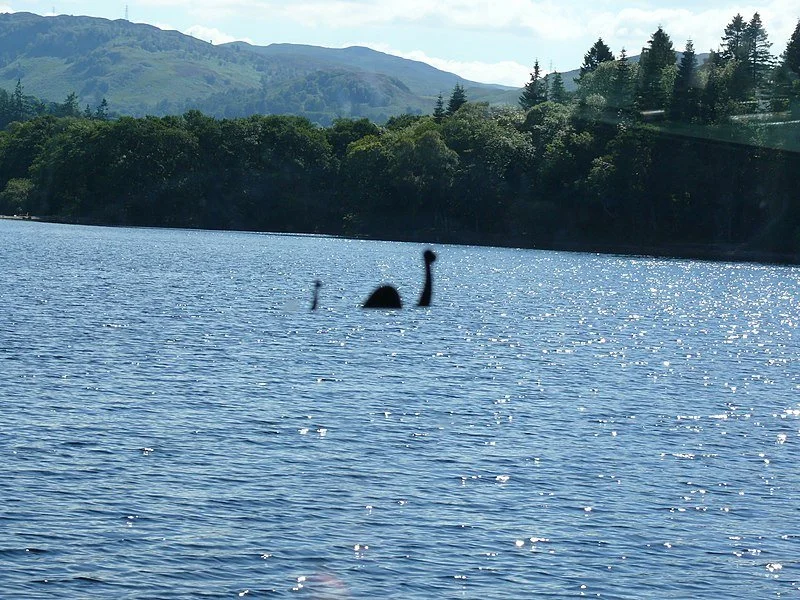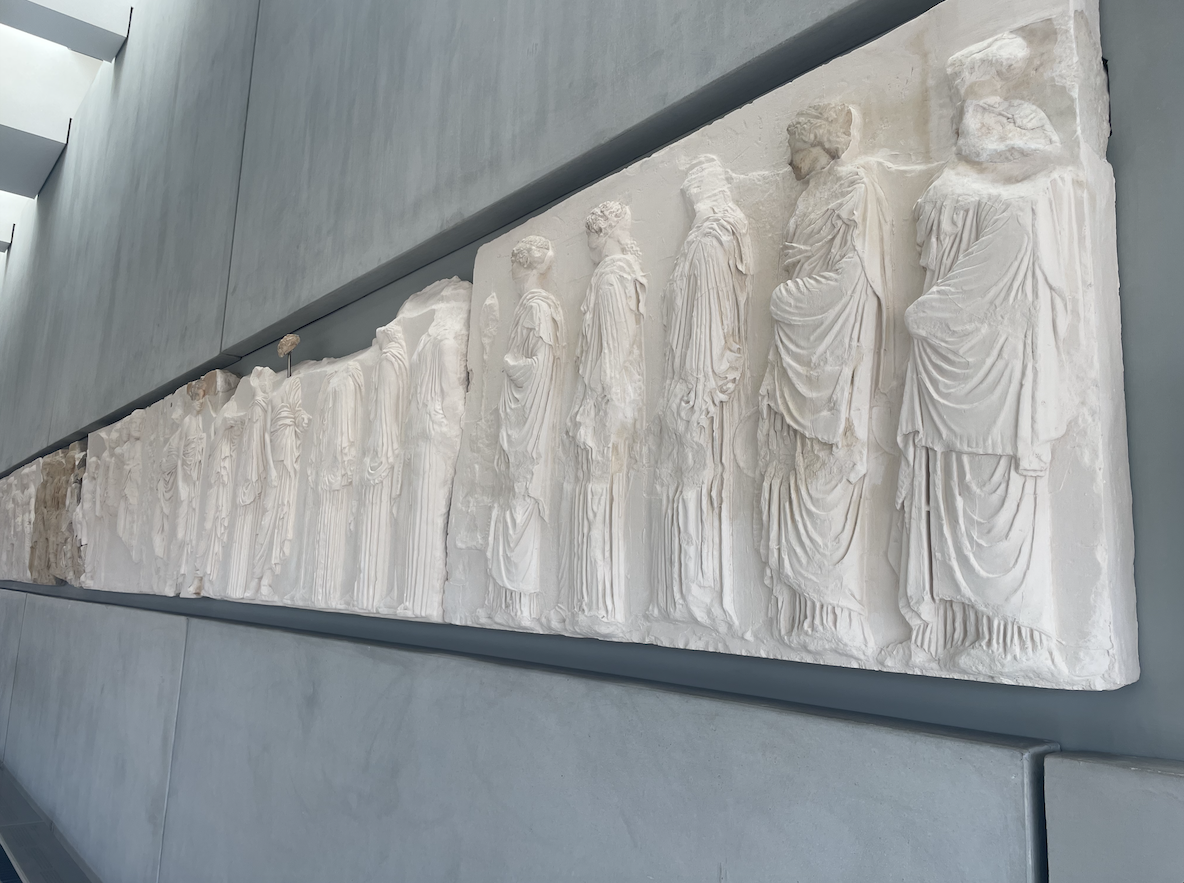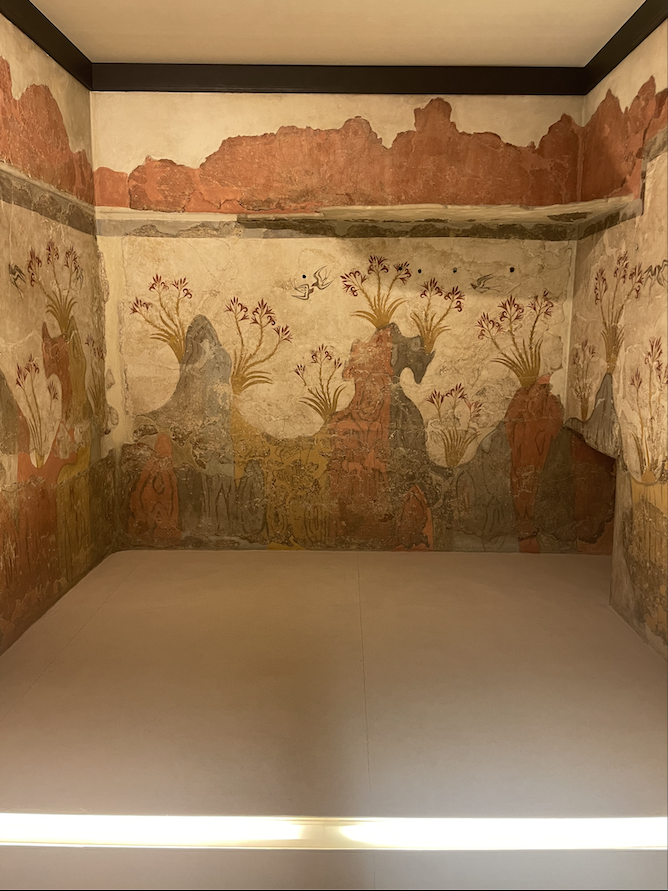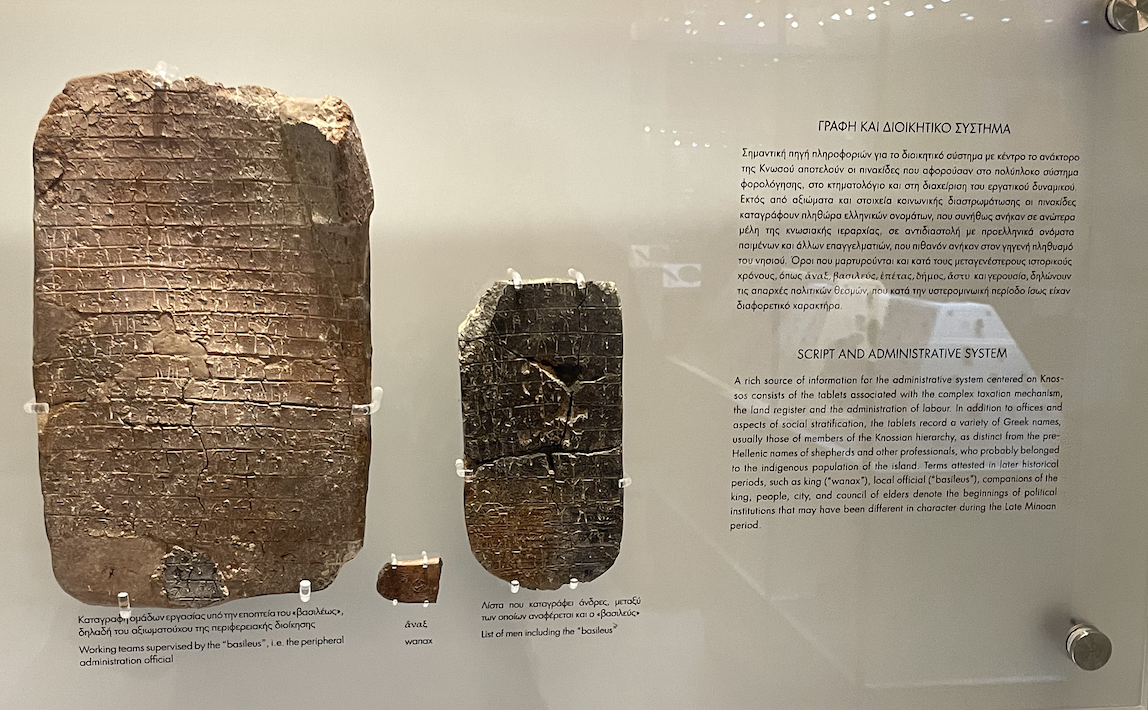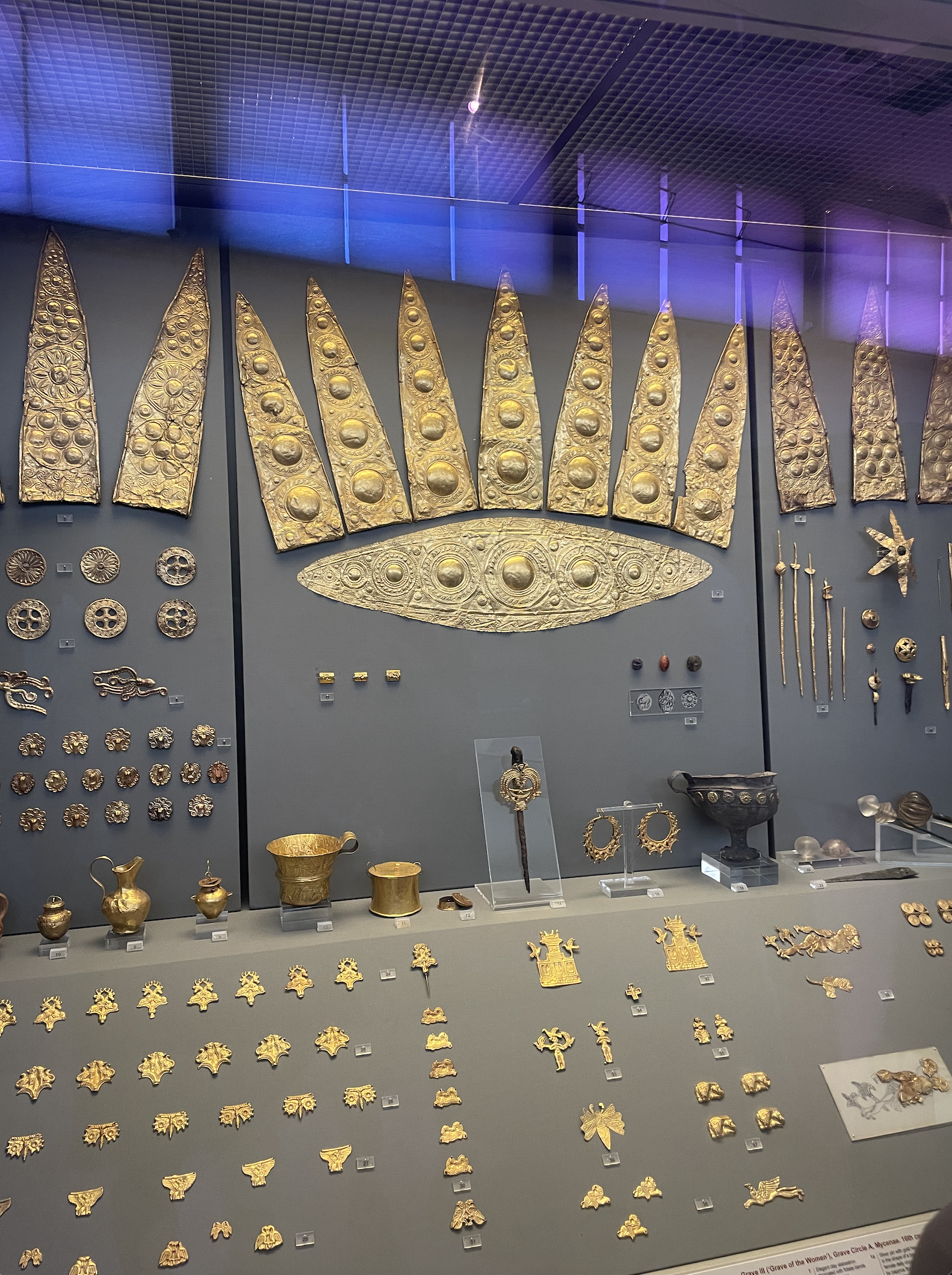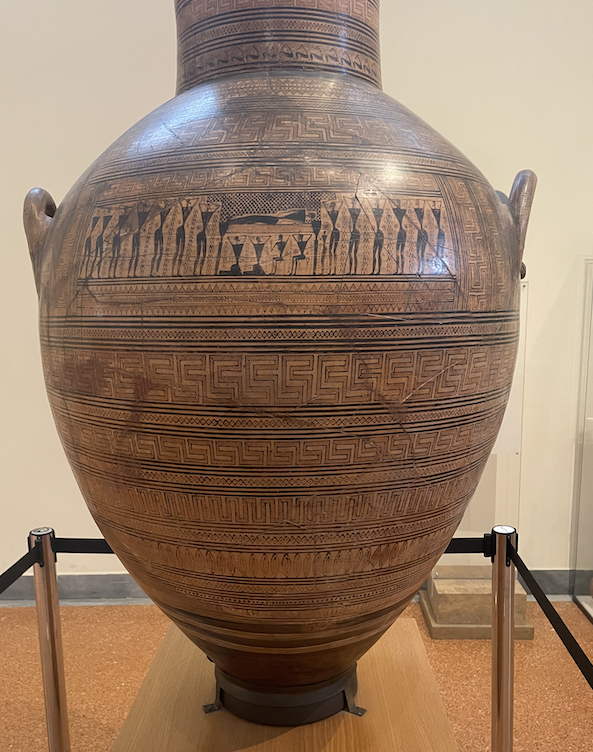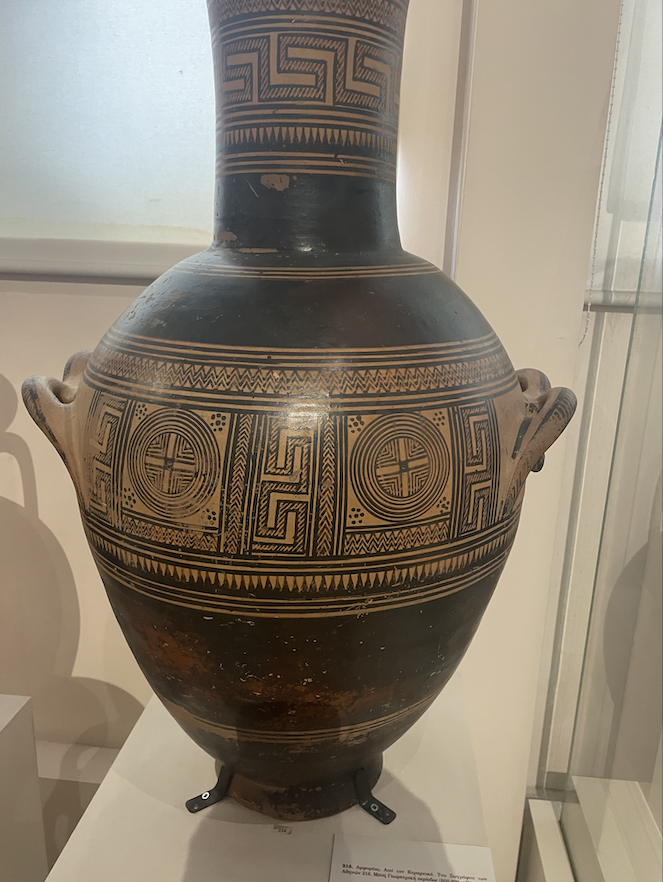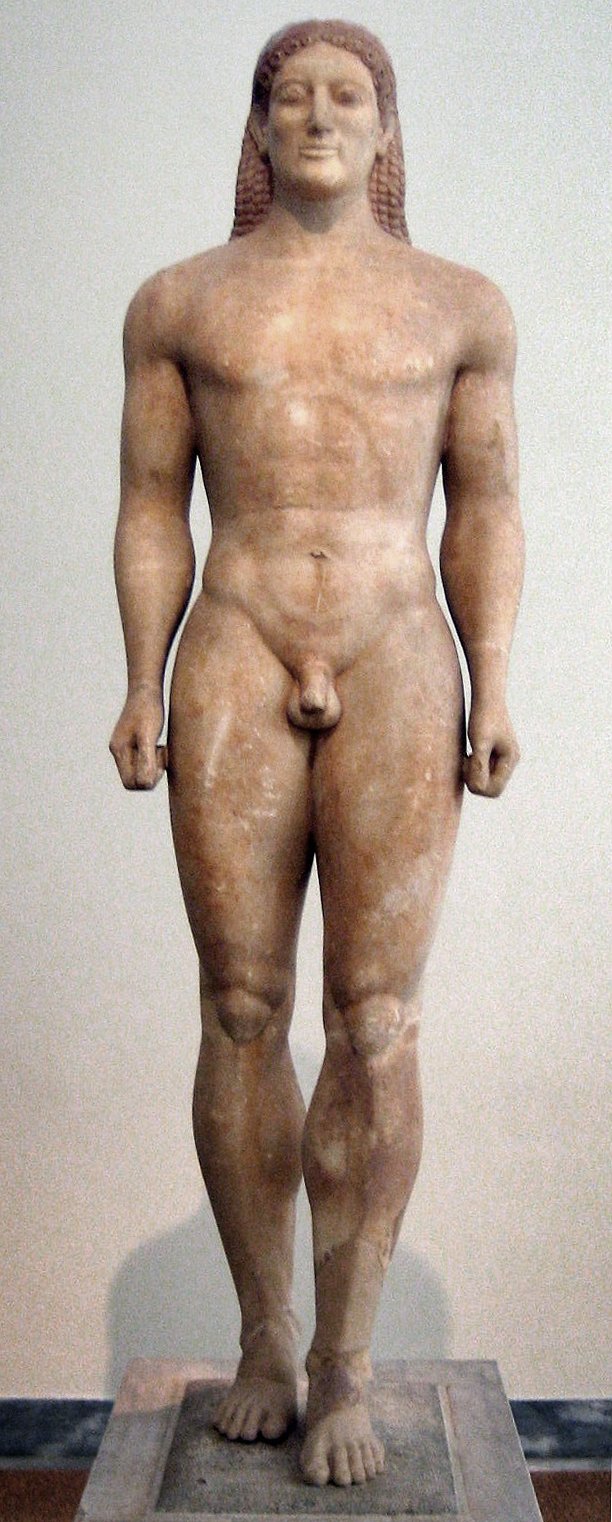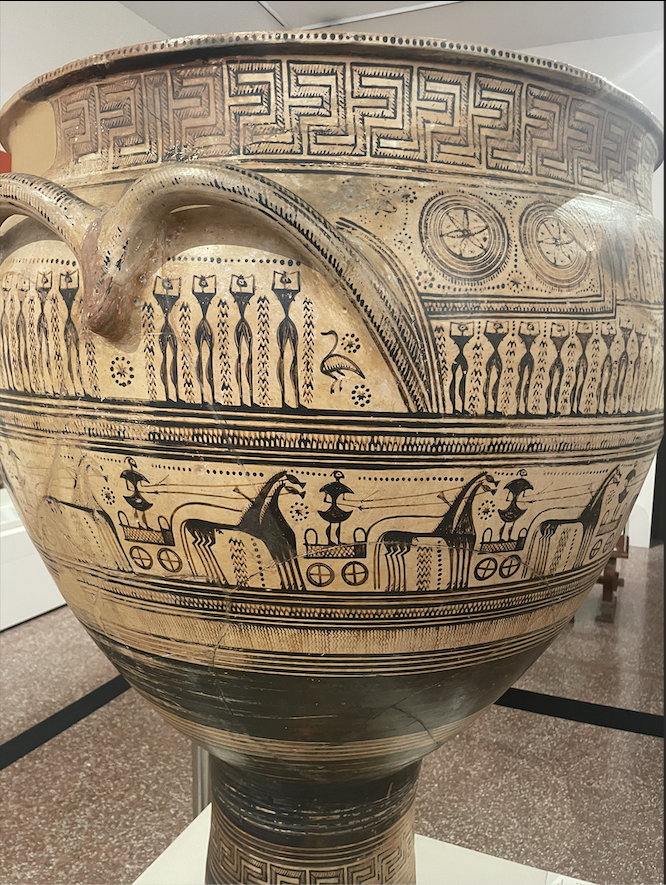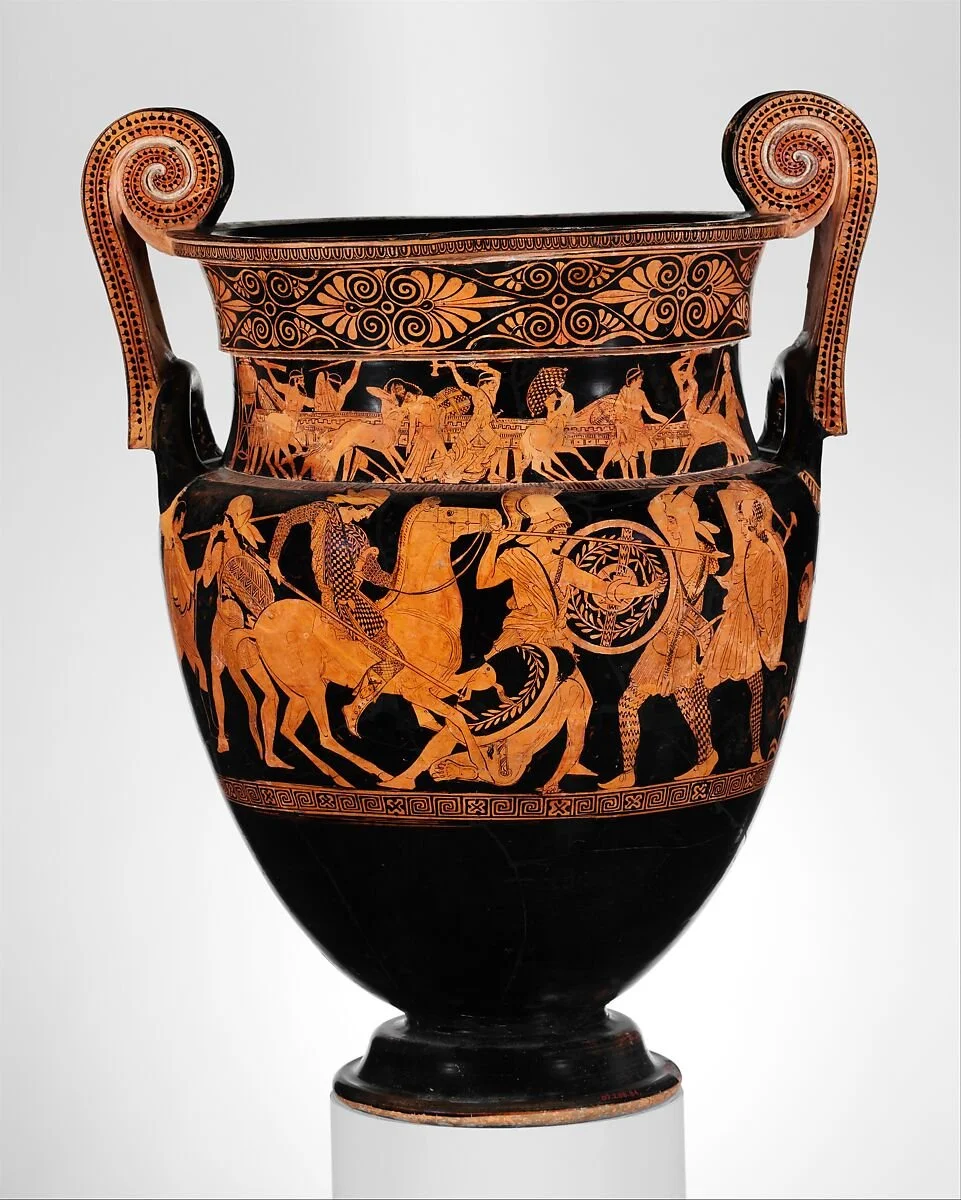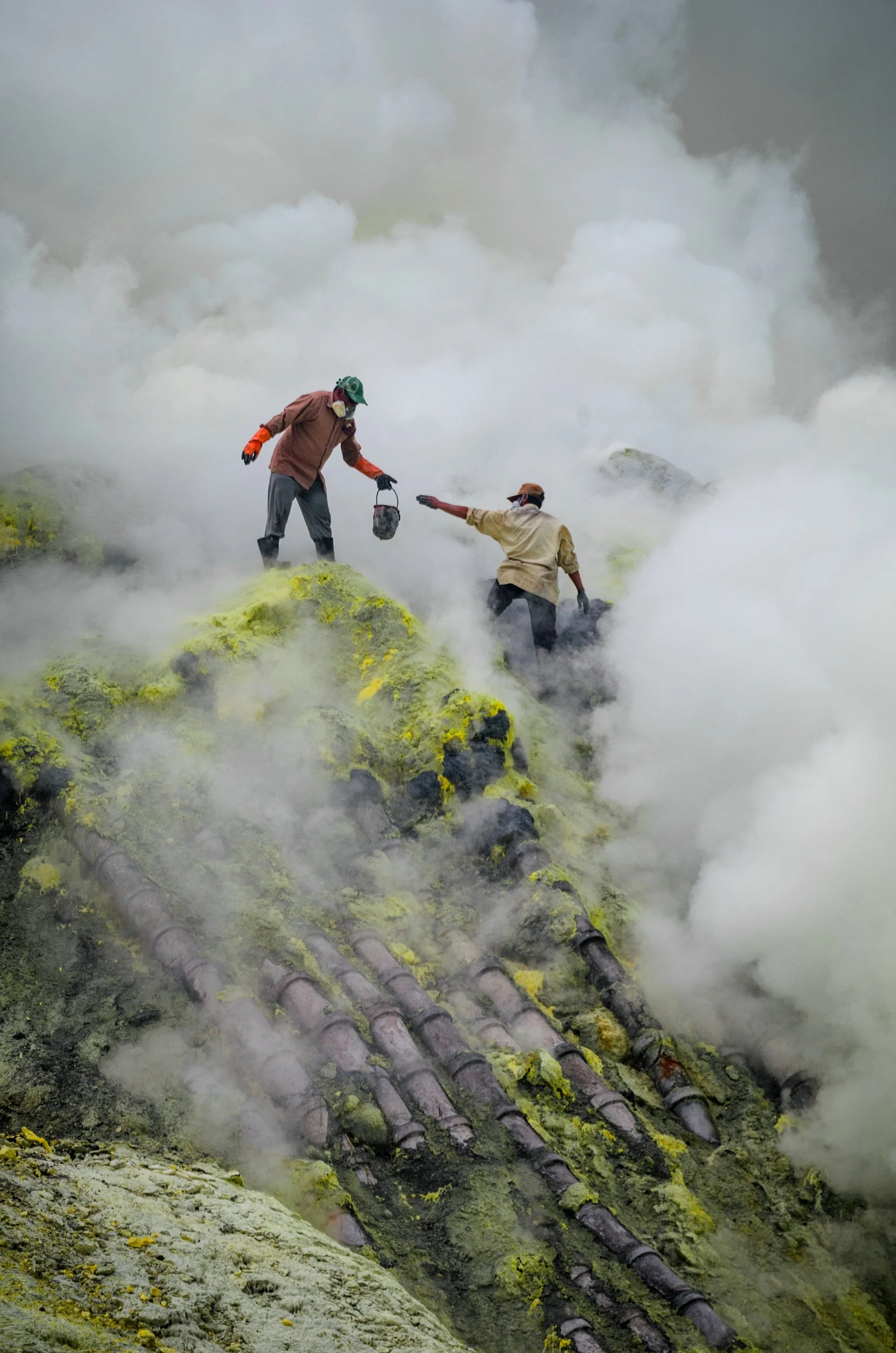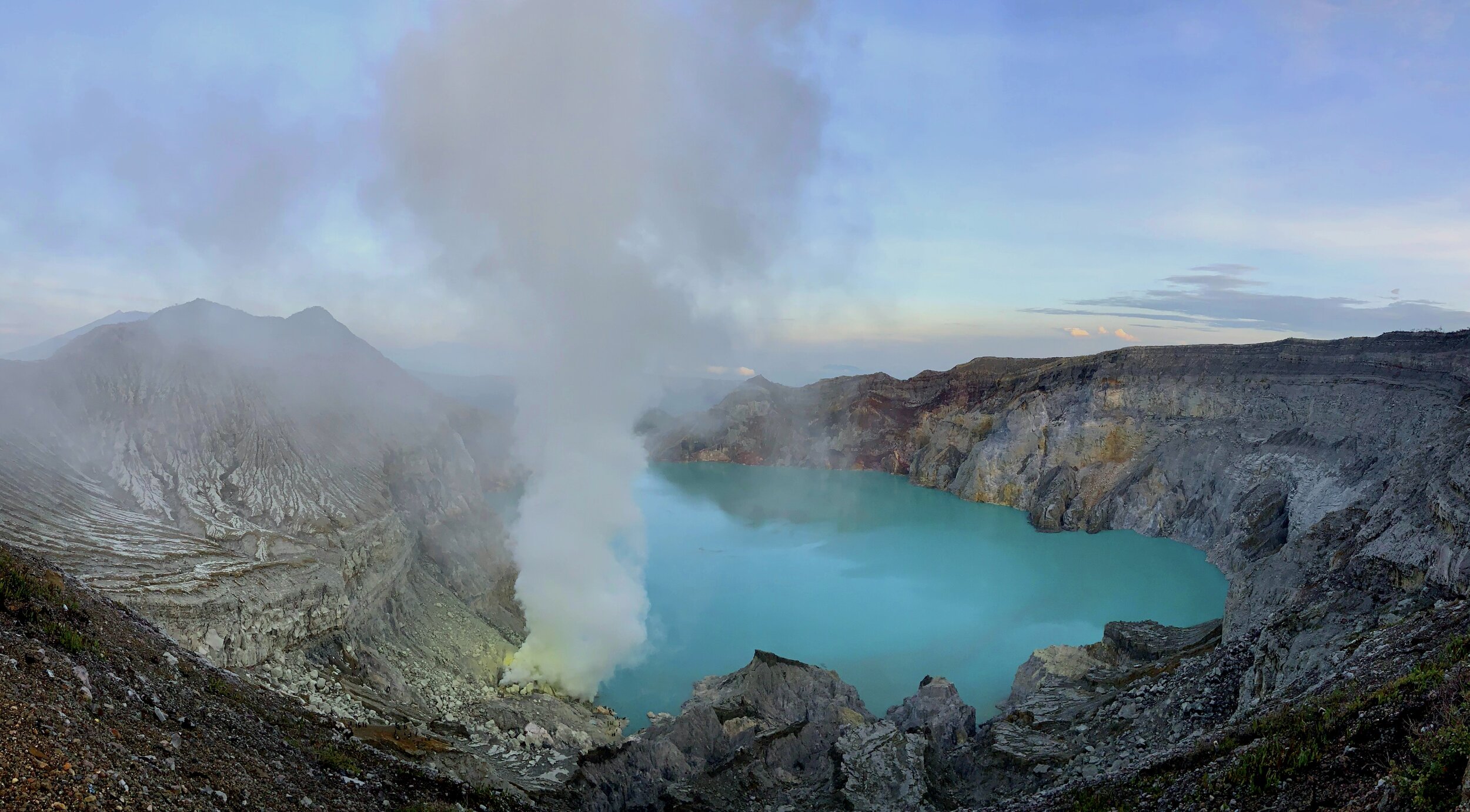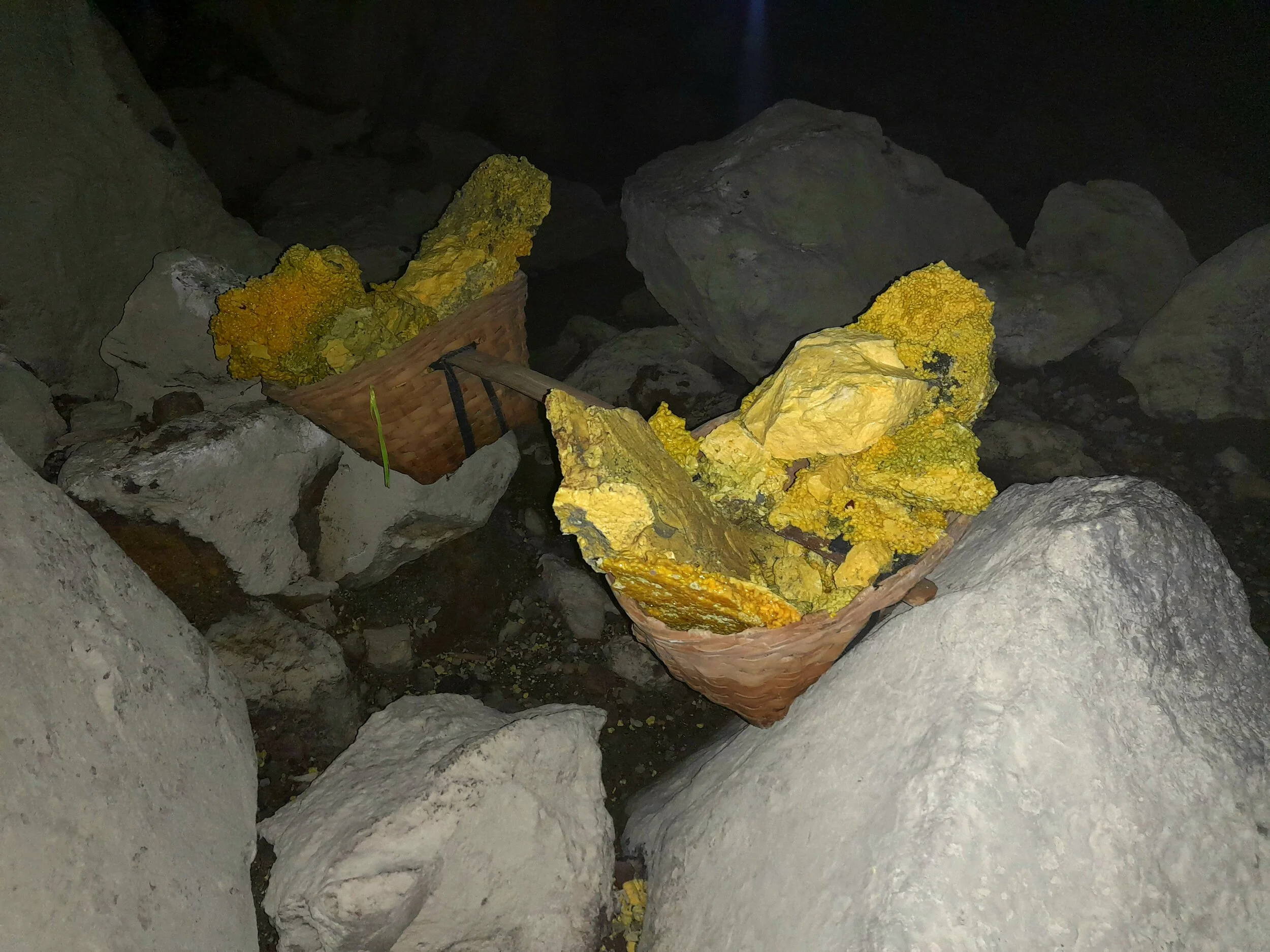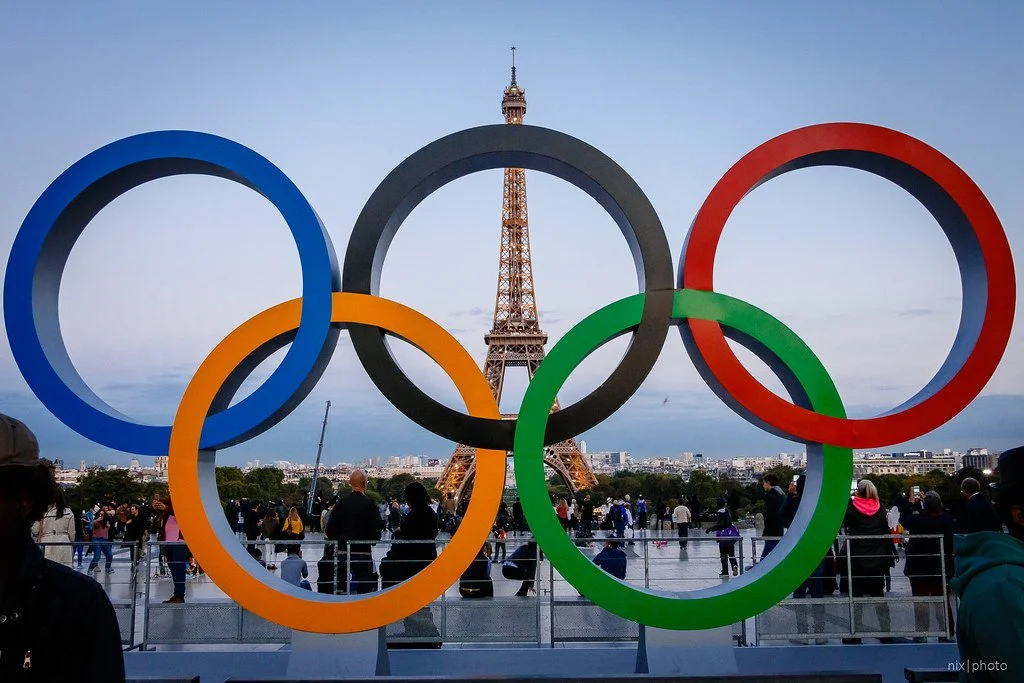CATALYST PLANET Holiday Gift Guide
Explore 32 curated gifts that resonate with purpose and panache.
Read MorePeru’s Floating Islands
The Uros Floating Islands on Lake Titicaca are man-made reed constructions in an Indigenous Quechua community.
Read MoreThe Essential Palestine Reading List
Dive into this collection that illuminates the rich tapestry of Palestinian history and culture.
An aerial view of Palestine. CC0
Curated with a respect for the multifaceted narratives of the region, this collection encapsulates an array of perspectives, histories and lived experiences. Each title delves deep into the heart of Palestinian identity, the intricacies of the conflict and the resilient spirit of a people striving for justice and peace.
NON-FICTION
1. They Called Me a Lioness
by Ahed Tamimi and Dena Takruri
Ahed Tamimi, an iconic Palestinian activist, garnered global attention for her fearless activism against the Israeli occupation. Her imprisonment as a teenager after confronting an Israeli soldier in her village of Nabi Saleh turned her into a symbol of Palestinian resistance. This compelling memoir offers a firsthand account of Tamini’s experiences and the ongoing struggle for justice in Palestine, providing profound insight into the realities Palestinians face under occupation.
2. The Ethnic Cleansing of Palestine
by Ilan Pappé
In this seminal work, Ilan Pappé meticulously traces the events of the 1948 Palestinian exodus, revealing the hidden reality of forced displacement and the establishment of Israel. With unflinching detail, Pappé unearths harrowing stories of dispossession and illuminates the profound impact of this historical upheaval on the Palestinian people.
3. Love Is an Ex-Country
by Randa Jarrar
In her memoir, Randa Jarrar fearlessly challenges stereotypes about Muslims and Palestinians. Embarking on a cross-country journey, Jarrar proudly embraces her queer, Muslim, Palestinian and unapologetically confident identity, offering a raw, authentic exploration of the intricacies of life.
4. The Iron Cage: The Story of the Palestinian Struggle for Statehood
by Rashid Khalidi
Historian Rashid Khalidi masterfully dissects the intricate history of Palestinian nationalism and aspirations for statehood. With scholarly precision, Khalidi navigates through decades of political intrigue, chronicling the challenges, setbacks and enduring resilience of a people bent on self-determination and recognition on the world stage.
5. The Hundred Years' War on Palestine
by Rashid Khalidi
Rashid Khalidi's meticulously researched book paints a vivid historical tapestry from the 1800s to the present in this unshrinking account of the assault on Palestinian society.
6. We Are Not Here to Be Bystanders
by Linda Sarsour
Linda Sarsour's memoir portrays her journey from Brooklyn to becoming a powerhouse in activism, stirring profound reflections on solidarity and advocacy.
7. Except for Palestine
by Marc Lamont Hill and Mitchell Plitnick
Marc Lamont Hill and Mitchell Plitnick's critique navigates the inconsistencies within progressive circles, urging universal consistency in advocating for all oppressed communities.
FICTION
1. Mornings in Jenin
by Susan Abulhawa
Susan Abulhawa crafts a poignant, multigenerational narrative that traverses the emotional terrain of a Palestinian family's journey through displacement and loss. Through exquisite storytelling, Abulhawa offers a deeply moving portrayal of resilience amid a tumultuous landscape of conflict and highlights the enduring spirit of the Palestinian people.
2. The Tiny Journalist: Poems
by Naomi Shihab Nye
Naomi Shihab Nye, the esteemed Palestinian-American poet, weaves poetic wonders inspired by Janna Jihad Ayyad, Palestine's youngest journalist. Ayyad, capturing anti-occupation protests at the age of seven using her mom's smartphone, becomes Nye's muse in this must-read collection.
3. You Exist Too Much
by Zaina Arafat
Zaina Arafat's debut novel is a transcontinental tale which oscillates between the United States and the Middle East. A fresh voice in Palestinian-American literature, Arafat artfully dismantles Israel’s pinkwashing while unraveling the complexities of Palestinian society for diverse readers.
4. Enter Ghost
by Isabella Hammad
Isabella Hammad's evocative narrative navigates modern-day Palestine, delving into the artist's struggles amid diaspora, displacement, and the shadow of occupation.
5. Evil Eye
by Etaf Rum
Etaf Rum's exploration of womanhood as a Palestinian American is a profound journey through intergenerational trauma, clashes of culture and labyrinthian family dynamics.
6. Salt House
by Hala Alyan
Set in the aftermath of Israel’s conquest of the West Bank and Gaza in the 1967 Six-Day War, "Salt Houses" chronicles a Palestinian family's odyssey from their homeland to Kuwait, painting a poignant legacy of longing and displacement passed through generations.
7. Mother of Strangers
by Suad Amiry
"Mother of Strangers" presents a cinematic love story against the backdrop of the Nakba in Jaffa, weaving themes of love, loss, and a nation's upheaval.
Raeann Mason
Raeann is a traveler, digital storyteller, and guide writer, with a degree in Mass Communication & Media from the Walter Cronkite School of Journalism. She is passionate about a/effective journalism and cultural exchange, and is an advocate of international solidarity and people's liberation. Her work at CATALYST PLANET focuses on reshaping the culture of travel and hospitality to be more ethically sound and sustainable
Amsterdam's Quest for a Safer Red-Light District
Propositions for legislative shifts strive for balance between tourism, public safety and the well-being of sex workers.
Red Light District Canal Street View. Alejandro Forero Cuervo. CC BY 2.0
For decades Amsterdam has been inundated by rowdy crowds of eager sightseeing tourists and a hotspot for visitors craving a subversive experience. The Netherlands’ progressive capital has long had a uniquely tolerant approach to often prohibited substances such as marijuana and psilocybin as well as toward the legalization of sex work. While the city openly celebrates this unique facet of its culture, the Dutch government has been forced to grapple with an influx of unruly visitors and an increasingly polluted, noisy, and at times unsafe Red Light district.
Amsterdam Smoke Shops. Travelmag.com. CC BY 2.0
In response to the district’s increasingly obstreperous environment, the city sought to address local residents’ noise and substance abuse concerns by proposing new regulations this past spring. The city has insisted on earlier closing times for bars (2 a.m., with no entry after 1 a.m.), stopped sex workers from working after 3 a.m., and banned the use of marijuana, alcohol, and other drugs in the streets. In response to the city’s regulatory shifts entrepreneurs, business owners and bartenders have been outspoken in frustration against the new policies, claiming little has changed in regards to the safety and cleanliness of the area. Sex workers have also voiced complaints over the restriction placed on the time they are allowed to work, expressing concern that the reduced hours have put them under financial pressure. This destitution can force them to accept clients they would normally reject.
Canal View Red Light District. Pixabay.com. CC BY 1.0
To further alleviate the pressure on the Red Light district, Amsterdam's authorities are considering a more drastic approach: creating a new location for legal sex work in a different neighborhood. This new location would be in a suburban area, and many are referring to the proposed locale as a “suburban erotic center” The goal of the move is to spread out the demand and ease the burden on the current district.
Since the legalization of sex work in the Netherlands in 2000 the country has been vigilant about enforcing a safe environment for individuals in the field, with regulations in place to combat human trafficking and other criminal behavior. For instance, sex work is illegal to practice in any space outside of a registered business (e.g. at home, in hotels, or in public spaces). In an attempt to protect and respect workers the city has banned tours of the Red Light district, required visitors to identify themselves with a valid form of ID, and set 21 as the minimum age for sex workers.
An Amsterdam Sex Shop. Rob Kievit. CC BY-SA 2.0
The city’s proposition of a new epicenter for sex work is still in its early phases, but it would dramatically change the scope of Amsterdam’s tourism. With fewer than a million residents, the city hosts roughly 20 million visitors annually, and tourism is one of the leading markets for local businesses. Any major change to laws regarding sex work and the overall functioning of the district will inevitably lead to shifts in the travel industry. The question remains as to whether the new area created to host erotic work will fix the industry’s systemic problems and help protect workers, and if it will solve the issues of over-tourism and noise pollution.
Avery Patterson
A rising junior at Vassar College in New York State, Avery is a Media Studies and French double major. She is an avid reader, writer, and traveler. She loves to immerse herself in new cultures and is an avid explorer who loves being in nature. She is passionate about climate and social justice and hopes to use her love of writing as a catalyst for positive change.
Experience Black Mexico
Black Mexicans celebrate their African heritage through arts and culture.
Read MoreStolen Childhoods: Unveiling Orphanage Tourism Across the Globe
Traffickers exploit the vulnerability of children for financial incentives from donors in orphanages and child residential homes.
Two young Haitian children. CC0
Across the globe, there are an estimated eight million children living in orphanages. Of this, 80% are not actually orphans and have at least one living parent. These children have been taken from their families and placed into children’s residential homes so that the caretakers can make a profit.
Orphanages, which are often viewed as a place of refuge for children, have begun using foreign generosity to profit off of their vulnerability. “Orphanage trafficking” involves children being recruited into residential care institutions for profit or exploitation and is not confined to any one country. This has sparked a new industry — orphanage volunteering — that has created a demand for institutions that will present children as ‘in need’ to make a profit from foreign donors. In Cambodia, for example, residential care institutions have increased by 75% in the last decade despite a decrease in the number of “real orphans.” Similarly, in Uganda, residential homes have increased the number of children under their care from 1,000 to 55,000 even with the subsequent decline in the prevalence of orphans themselves. This rise in residential institutions has taken place primarily in tourist hotspots so that orphanages can capitalize on financial incentives.
As a system that takes advantage of the international market and tourism business, this has become a global problem. A significant rise has been observed in post-conflict Nepal, beginning in 2006. During the Nepalese Civil War, traffickers posed as boarding school representatives and promised children and their families better living conditions in Nepal’s capital, Kathmandu. Rather than being taken to educational institutions, children were taken to under-resourced orphanages and declared “paper orphans.” This sales pitch has evolved accordingly, shifting from inter-country adoption alone to running orphanages in tourist areas to attract donations — 90% of homes being in the top 5 tourist districts. In 2015, Next Generation Nepal (NGN) and UNICEF released statements warning about the increase in child institutionalization. The government of Nepal subsequently passed a directive prohibiting children to cross district borders unless they were with their parents or had government approval. There are still hundreds of children living in orphanages in Nepal today, although the COVID-19 pandemic restricted operational space and allowed local governments to better implement their child protection mandates, contributing to the strengthening of the overall system.
In China, there is also an opaque relationship between trafficking and adoption. It was discovered in 2012 that Americans alone adopted almost 3,000 Chinese children who were taken from their parents and sold into orphanages. As a country that is aware of the existing issue, parents often have to take matters into their own hands to conduct searches because local law enforcement will silence anyone who is publicly discontent. Aside from the financial incentive of orphanage volunteering alone, scammers have even gone as far as to request large sums of money from parents for information on their child’s whereabouts, information that is ultimately fake.
Aside from the vulnerabilities of the children, traffickers also prey on those of their parents. In Haiti particularly, parents placed their children into orphanages after the 2010 earthquake. They were pressured to believe that their children would be better off; they would have a roof over their heads, food and access to education. One woman, struggling to provide for her sons, was approached by Jonathas Vernet who offered to help her. Vernert, previously running the Four Winds Spirit orphanage, was found to have subjected children to cooking, cleaning and abusively harsh discipline. The children did not attend school and lived in distressed conditions, but Vernet justified this by blaming American donors for neglecting to offer sufficient financial support. An estimated $100 million a year is donated to all orphanages in Haiti by churches and nonprofits in the United States for the purpose of providing food, water, medical care and education. However, most of this money is used to drive the continuation of profit from orphanage volunteering and further expand the business. To end the institutionalization of children, Lumos, an to replace orphanages with foster care systems and advocates for local adoption practices. The organization also advises donors to ensure that the projects they are supporting have a sustainable care vision.
Today, orphanage trafficking in Haiti has not changed much. As of 2021, it was estimated that there were 30,000 children in 750 orphanages, with only 35–50 of those being licensed. Despite efforts to develop and regulate the foster care system in Haiti, attempts to combat orphanage tourism have been static as a result of continued high poverty and unemployment rates.
Globally, orphanages have become hubs where child exploitation for profit can thrive, so long as there are still unmonitored donations and vulnerable children. To better curb the proliferation of child trafficking into orphanages, it is recommended that governments prioritize community-based care and better inform philanthropists how their donations to orphanages may be misused. By combating this issue with strengthened child protection systems, increased awareness and the promotion of family-based care over institutionalization, the root causes of this problem can be mitigated and children better protected.
Mira White
Mira is a student at Brown University studying international and public affairs. Passionate about travel and language learning, she is eager to visit each continent to better understand the world and the people across it. In her free time she perfects her French, hoping to someday live in France working as a freelance journalist or in international affairs.
7 Unique Wedding Traditions from Around the World
Beyond vows and wedding rings, these seven wedding customs exhibit international traditions of love.
A newly wedded couple. Min An. CC0.
Love is universal, but also multifaceted and varied. For couples that choose to get married, the universal yet unique nature of love translates into exciting wedding traditions around the world. Although some couples opt to create their own contemporary commemorations, many lovebirds look towards cultural customs when celebrating their big day. Whether during the ceremony, reception or pre-wedding festivities, global traditions persist and are honored in modern weddings. For centuries couples have developed and practiced these seven ways to display their affection and commitment on, around and after their wedding day.
1. Mehndi — India, Pakistan, Middle East, Africa
A bride displaying her Mehndi. Qazi Ikram Haq. CC0.
Mehndi, also referred to as Mehendi and/or Mehandi, is an intersection of celebration and art. Although its country of origin is unclear, this body art, made from dry, powdered leaves of the henna plant, is practiced in India, Pakistan, some countries in Africa and parts of the Middle East; many historians claim that Mehndi originated as a practice in India at least 5,000 years ago. It can be worn at Hindu, Sikh and Muslim weddings. The henna plant is incorporated into a paste, often dark brown or reddish brown in color, that is used to create intricate designs on the hands and feet of the bride. These beautiful designs, painted during a pre-wedding body painting ceremony, can include floral patterns, religious figures, the names of the bride and her partner, and even personal, sentimental details. Wearing Mehndi during a wedding is said to bring good luck and health to the couple’s marriage.
2. Cutting the Tie — Spain
A selections of ties.
Although cutting up an article of clothing on a person’s wedding day may seem alarming, this tradition, hailing from Spain, is conducted with entirely good intentions. In a post-wedding ceremony — during the reception — a groom's tie is cut up into tiny pieces by the groomsmen or close friends. The pieces of the tie are then extravagantly auctioned off to wedding guests in exchange for modest, or even large, sums of money. Despite guests only receiving a small sliver of fabric after gifting their own money, the purpose of auctioning off the tie is to give the groom and their partner one last monetary gift. Beyond representing financial abundance and luck, “cutting the tie” also represents the guests’ investment in and good intentions towards the couple.
3. The Symbolism of Red — China
Red wedding invitations. RDNE Stock Project. CC0.
Not attached to one specific element of the ceremony, the color red is often incorporated into weddings in China. The rise to popularity of the color red may have begun during the Ming Dynasty, over six hundred and fifty years ago. Red can be worn as the primary color of various garments — whether they be suits, dresses (the bridal gown is often called a qipao), jackets or veils, along with floral arrangements, candles, invitations and other decor. Perhaps the versatility and prominence of red can be attributed to its many meanings. Red can symbolize luck, joy, prosperity, happiness, honor, love, loyalty and even fertility.
4. Money Spray — West Africa
Nigerian Women wearing Iro and Buba Dance at a Wedding. Jeremy Weate. CC0.
This tradition is straight out of a couple’s dream. In this custom, which is popular in Nigeria and other parts of West Africa, but specifically originated with the Yoruba people in Nigeria’s Southwest, the newly-wedded couple is showered with money at their reception by family and friends. People dance and laugh while spraying the money, creating a palpable upbeat energy. During the reception and money spray, the newlyweds commonly wear traditional garments of the Yoruba people. Brides wear an Iro and Buba, a combination of draped and wrapped fabric on top of a blouse that is often colorful and/or patterned, and grooms wear an Agbada, an elegant loose-fitting robe. The subsequent money spray symbolizes good fortune and happiness for the couple that guests feel.
5. Claddagh Ring — Ireland
A Claddagh Ring. Royal Claddagh. CC BY 2.0.
The Irish tradition of wearing a Claddagh ring symbolizes a person’s relationship status and, more specifically, can visually depict their shift into marriage. The Claddagh ring is made up of hands grasping a heart adorned with a crown. Depending on the hand the ring is worn on and direction of the heart, different relationship statuses are depicted: wearing a Claddagh ring on the right hand facing outwards depicts a single status, while the right hand facing inwards indicates the person is in a relationship; the left hand facing outwards represents engagement, and the left hand facing inwards shows that the person is married. Claddagh rings can serve purely as the engagement and wedding rings, or can be worn in addition to international-style Western wedding and engagement rings. Commonly worn by brides, Claddagh rings can be passed down through generations of women in families.
6. Stefana — Greece
A floral Stefana bridal crown. Faylyne. CC BY 2.0.
Ornate and delicate, Stefana are crowns commonly worn during Greek Orthodox Wedding Ceremonies. Although Stefana were traditionally made of vines, branches and flowers, modern Stefana can be made of metal with gemstones. Stefana are worn by both partners during the wedding and, during the wedding ceremony, are connected by a ribbon or thread going from one person’s head to the other. The ribbon symbolizes the strong connection between the couple, and the crowns as a whole can symbolize unity, love, faith and loyalty. During a traditional Greek Orthodox Wedding ceremony, these crowns are also blessed by a priest.
7. Hapgeunrye, or Cup Drinking — Korea
An example of a Metal Cup Set. CC0.
In Korea, Hapgeunrye is a ceremony where the couple drinks from the same cup. The tradition, however, varies depending on the region and preferences of the couple. In some cases, the couple will drink from the same metal cup while in others the couple will drink from two halves of the same gourd. In both cases, the rite occurs during the wedding ceremony itself and the liquid drunk from the cup is often a type of liquor. This custom symbolizes the couple being united as one entity, recognizing their respect for each other and the harmony they hope will be fostered in their relationship.
Carina Cole
Carina Cole is a Media Studies student with a Correlate in Creative Writing at Vassar College. She is an avid journalist and occasional flash fiction writer. Her passion for writing overlaps with environmentalism, feminism, social justice, and a desire to travel beyond the United States. When she’s not writing, you can find her meticulously curating playlists or picking up a paintbrush.
The Atacama Desert’s Fashion Graveyard
Once a vast, uninterrupted plateau, Chile’s Atacama Desert is now a technicolor testament to overconsumption.
The Atacama Fashion Graveyard. Antonio Cosio. CC BY-NC.
A cursor hovering over the checkout of an Amazon cart; an unassuming paper bag carrying the new, trendiest cut of jeans from Forever 21; a Gmail notification that indicates a menagerie of Shein clothing has been shipped. These testaments to overconsumption in daily life may produce a quick, subtle pang of guilt. But, ultimately, this engagement with the world of fast fashion tends to be “out of sight, out of mind.” After all, once the clothing is donated or discarded most people assume it will end up in a landfill, neatly tucked away, never to be seen again. With no visual proof of the waste guilt subsides, and the cycle of overconsumption repeats.
The cyclical and rampant nature of overconsumption, however, has real, tangible implications — implications that can be seen and felt by citizens of Iquique, a Northern Chilean city in the Atacama Desert. An average of 39,000 tons of fast fashion waste are dumped in Iquique per year, in addition to the approximately 60,000 tons of clothing imported into Chile annually. Roughly 40,000 square miles, the Atacama desert was once a pristine yet arid plateau; a prime sight for stargazing under a clear, open sky. The desert landscape, covered in salt flats, valleys and rocky topography, averages about 40,000 visitors per year but has since been contaminated.
The clothing pile has grown to such an extent that it can be seen from space using satellite technology. But, before the magnitude of clothing became noticeable from an extraterrestrial viewpoint, people residing in Alto Hospicio, a municipality next to Iquique, watched as the unbridled clothing dumping grew out of hand. Clothes manufactured in China and Bangladesh that fail to sell in U.S. stores are brought in through the port of Iquique and subsequently dumped into the Atacama. The dumping site raised concerns among citizens of Alto Hospicio as early as 2012, but their unease was ignored.
The Atacama Desert. NASA. CC0.
Disheartened, the people of Alto Hospicio claimed to have experienced negligence by local and national government officials firsthand. For years, the waste grew despite continual pleas for action. Although in 2021 the former Minister for the Environment of Chile, Javier Naranjo Solano, expressed his worries about the vast quantities of textiles being imported into Chile and proposed remediation, some Chilean environmental engineers and scientists feared that the the laws he proposed, entangled with bureaucratic processes, would be far too slow-moving considering the urgent, rapid growth of the clothing pile. Other citizens, however, have faith that Chile’s newly appointed Minister for the Environment, Maisa Rojas, will be able to translate eco-anxiety into concrete action.
Even under new leadership, however, the already massive pile of clothing is a nearly indestructible hazard. Much of the poor-quality fast fashion clothing dumped in Atacama is polyester, a material made out of the non-renewable resource petroleum. The open-air clothing pile secretes pollutants into the air; they seep into the ground. Thus, petroleum and other harmful materials can contaminate any remaining groundwater in aquifers under the desert. As potent as plastic and as enduring as steel, the clothing dumped in Atacama will take 200 years to biograde.
The Atacama Desert is often considered the driest climate on the planet, with annual rainfall averaging at only .03 inches. Atacama’s arid climate dangerously aids the spread of intentionally ignited fires. In order to curtail the amount of clothing discarded, fires are illegally and mysteriously started. These fires only serve as a further pollutant on top of the fabric already decomposing in the hot, arid environment.
Although many merchants reside in Iquique, one of South America’s largest duty free ports, many in the municipality of Alto Hospicio live in poverty — 25% of residents in Alto Hospicio specifically live in extreme poverty and, with many having poor access to quality housing. Although many residents travel to the Atacama fashion graveyard to salvage and sell discarded clothing, their proximity to the dump site has sinister implications: the negligence of the Atacama fashion desert and subsequent pollution acutely harms low-income communities in Northern Chile. Fast fashion waste, both burnt and decomposing, creates fumes that are linked to respiratory diseases, chronic illnesses, reproductive issues and even types of cancer.
The Port of Iquique. Diego Delso. CC-BY-SA 4.0.
Although there are efforts to repurpose the dumped clothing, with companies such as Ecofibra Chile taking the fabric and transforming it into thermal insulation panels, only one method of curtailing fast-fashion waste can truly have an impact: curbing our own overconsumption. Instead of purchasing that cost-effective Amazon fashion find, or the trendy new jeans from Forever 21, look into your own closet. Rediscover a dress that has been tucked away in the depths of your dresser. Organize a clothes swap with friends. Borrow your Aunt’s blouse or your Grandfather’s wool sweater. Rather than falling victim to trend cycles, explore what has been cherished, saved and passed down.
Carina Cole
Carina Cole is a Media Studies student with a Correlate in Creative Writing at Vassar College. She is an avid journalist and occasional flash fiction writer. Her passion for writing overlaps with environmentalism, feminism, social justice, and a desire to travel beyond the United States. When she’s not writing, you can find her meticulously curating playlists or picking up a paintbrush.
Flooding in Libya: A Harbinger of Climate Change’s Deadly Effects
Sustainable infrastructure is the world’s best defense against increase in precipitation due to climate change.
Aid workers struggle to reach city in Libya where catastrophic flooding killed thousands. PBS.
Catastrophic flooding in Libya in September has taken as many as 5,300 human lives, according to the Interior Ministry of Libya’s eastern government. Amid such massive human casualties, many around the world are left wondering how such losses may be prevented as climate related natural disasters become increasingly common.
Extreme flooding events like the one in Libya are on the rise as Earth’s average temperature increases, causing more evaporation and thus greater precipitation. According to the EPA, global precipitation has increased by an average of 0.04 inches per decade since 1901. In more than half of recorded locations, flooding is now at least 5 times more common than it was in the 1950s. This month alone, the effects of extreme precipitation and flooding have been felt in Hong Kong, Greece, Turkey, Brazil, Libya and the United States.
In Libya and around the world, urban planning must adapt quickly to the rising threat of flooding. However, this poses a challenge for many developing nations where resources are often either limited or diverted elsewhere. For example, in Derna, the city in northeast Libya that was the most affected by the flooding, neglected infrastructure was in part to blame for the catastrophic loss of human life. Heavy rains caused two dams to burst, dams that experts have been warning are prone to collapse for years. Unfortunately, resources in Libya are generally diverted towards the ongoing civil war. More busy with conflict than governing, public officials failed to provide the necessary repairs on the dams.
Moreover, climate change not only increases precipitation but also hinders the environment’s ability to withstand heavy rainfall. In Derna, the inundation of the area has washed away much of the soil, which would have helped absorb some of the precipitation. The ground in and around Derna has been left hard, cracked, and stripped of vegetation. Due to these conditions, very little water was retained in the ground, worsening the flooding. Globally, similar conditions must be prevented if flooding events like the one in Libya are to be curbed.
Libya is far from the only place where the infrastructure is inadequate in the face of increasingly heavy rains. Most urban areas around the world, even those in rich countries with the resources to adapt like the United States, have not created infrastructure nor correctly supported the local environment to prevent extreme flooding. Globally, urban planning must now be rapidly modified to account for increasing precipitation.
Making the ground more permeable is the most impactful way urban planning can help reduce extreme flooding. One way this can be achieved is through the incorporation of permeable pavement. Using this type technique allows water to pass through porous paved surfaces into groundwater stores instead of overwhelming the local drainage systems. Further, creating more green spaces, including green roofs, trees, parks, and rain gardens, all increase the permeability of the ground. When the ground can absorb more water, flooding events like the one in Libya may be prevented.
Get Involved:
To help Libyan flood victims you can donate to UNICEF, International Rescue Community, or Doctors Without Borders.
Sophia Larson
Sophia Larson is a recent graduate of Barnard College at Columbia University. She previously worked as the Assistant Editor on the 2021 book Young People of the Pandemic. She has also participated as a writer and editor at several student news publications, including “The UMass Daily Collegian” and “Bwog, Columbia Student News.”
Free The Nipple: Unpacking Inequality in the Feminist Movement
Evaluating the absence of inclusive representation in a movement that claims to empower all women.
Activists march for #FreeTheNipple. Maria Eklind. CC BY-SA 2.0 DEED
#FreeTheNipple is a movement that aims to spread awareness about the sexualization of women’s bodies. Its very mission is to point out the hypocrisy in the sexist laws that police women’s bodies. Common tactics at protests involve topless rallies and marches at well-known government monuments and social spaces, including social media.
The movement has gained traction, with celebrity personalities like Cara Delevingne, Kendall Jenner and Amber Rose voicing and — bare-chested — showing their support. It got more attention as some French female protestors would come shirtless to non-feminism related protests. The most notable incidents of this occurred during solidarity protests for Ukraine in response to Russia’s invasion.
Though a noble initiative, many scholars question who the movement represents, and whether it is inclusive of all women. While some agree with its efforts to desexualise women’s bodies through legislation, others call into question the strategy’s efficacy in actually changing the day-to-day lives of women in the United States and around the world. Some challenge its relative homogeneity, while others still commend its innovative radicalism.
One recurring criticism from afro-feminist advocates in this movement is that, for centuries, black women have been disproportionately exploited and sexualised. In Southern African cultures, the exposure of women's breasts was normalised long before liberal white feminists began advocating toplessness. Despite this history, many black women feel that there is a decolonial aspect to this movement that is not being spoken about enough.
Some also claim that the movement has excluded the bodies of trans women. The Guardian and Reuters have released articles stating that many thinkers have critiqued it for that same reason.
According to writers like bell hooks, this marginalisation is not a new phenomenon. Black women intellectuals have been excluded from feminist discussions since the formation of the suffragette movement. While Black women fought alongside white women for suffrage, they were ultimately disposed of once their utility to the movement was no longer needed.
Numerous articles share the sentiment that, if western feminism wants to evolve and effect systemic and societal change, it must move beyond the exclusion perpetuated by its forebears. Additionally, in advocating for the freeing of nipples, we must question how and why white supremacist patriarchies have shackled all types of nipples, including those of black, white, brown people.
The #FreeTheNipple movement is similar to the suffragette movement, in that many people laud its contribution to the bolstering of women’s rights. However, others feel it is important to recognize its limitations and the ways it perpetuates exclusion.
The #FreeTheNipple Movement has made many ripples in the most recent waves of feminism. Through drawing parallels to the suffragette movement, its biggest fans and most ardent critics demonstrate how the feminist forms of protest have evolved.
To Get Involved:
Here Are Some Resources
PSA Tackles Breast Cancer Awareness and Freeing the Nipple in One Brilliant Video. Breast cancer awareness group MACMA tackled social media's "no female nipples" policy creatively. In a video, a topless woman with obscured nipples demonstrates breast self-exams on a topless man, addressing breast health for all genders. The campaign, named #ManBoobs4Boobs, cleverly conveys an important message while navigating platform restrictions.
Free the Nipple: The History of A Hidden Movement
The "Free the nipple" movement, about a decade old, aims for gender equality and body acceptance. Originating from the 2012 film "Free The Nipple," it protests censorship and double standards regarding male and female nudity. The movement sparked global protests, legal battles, and discussions about artistic expression, especially on social media platforms like Instagram. Despite some victories, challenges persist, emphasising the ongoing need for body equality.
Will Instagram Ever Free The Nipple?
The article discusses the #Freethenipple movement on Instagram, where artists creatively challenge the platform's ban on female nipples in photography. Despite discussions with Instagram, the ban remains due to cultural and consent concerns. The article explores artists' strategies to navigate these limitations.
Khahliso Myataza
Khahliso is studying Cognitive Sciences and African Studies at Wellesley College and MIT. At Wellesley, she is the Political Chair of Ethos, and the Lecture Head for the Wellesley African Students Association. She is the standing CEO of the Conscious Campaign - a youth-led organization that aims to spread awareness about social justice issues in South Africa. On social justice projects she has worked with the United Nations and the African Union.
What India’s Successful Moon Landing Means for Space Exploration
India is now the fourth country to land on the moon, and its lunar rover is making some big waves in space exploration.
The Chandrayaan-3 lunar exploration craft was launched from the south of India on July 14. Sky News. CC BY-SA-NC 2.0
On August 23, the Indian Space Research Organization (ISRO) landed its Chandrayaan-3 craft near the moon’s south pole, marking both the country’s first ever moon landing and the world’s first on that specific lunar region. Not only has this achievement finally placed India among the ranks of other space exploring nations, but has also made it one of only four countries to land a craft on the moon. The location of the craft’s landing near the unexplored south pole is significant given the multiple failed attempts by other nations to do just that in the past and stake a claim to lead future research in the area. Chandrayaan-3’s successful landing will hopefully cement the credibility of the ISRO on the international playing field and allow for continued collaboration with other foreign space agencies. During its two-week lifespan, the rover investigated the existence of frozen water deposits beneath the surface of the moon, and has made a number of surprising discoveries that orbiting crafts were unable to.
A digital rendering of the Chandrayaan-3 craft and its lunar rover. NDTV. CC BY-NC 2.0
While India’s space program was first established in 1962, it took another decade or two for the ISRO to really pick up steam. Many of the first projects involved sending satellites up into Earth’s orbit in order to map and survey the country from above, bringing telemedical and communication services to communities in remote regions. Chandrayaan, a Sanskrit term meaning “mooncraft,” is the name of India’s lunar exploration program, which made its debut between 2008 and 2009 with the Chandrayaan-1 lunar space probe, which found water deposits on the moon using various mapping techniques and reflection radiation. The next craft, launched in 2019, was comprised of an orbiter, moon lander and rover, and was actually intended to be the first to land on the south pole of the moon, but after successfully entering lunar orbit, the ISRO lost communication with the landing craft and rover before touchdown.
Chandrayaan-3 is therefore the culmination of more than a decade of scientific research and technological development and is undoubtedly the crown jewel in India’s space program. The probe was launched on July 14 from Sriharikota Range, the country’s largest launch site located in the southern state of Andhra Pradesh, and successfully touched down on the moon on August 23. Unlike its recent predecessor, the Chandrayaan-3 traveled without an orbiter module, further cementing its intention to land on the moon and conduct experiments in situ. Additionally, while this craft was unambiguously an Indian project and creation, some of the technology on board resulted from various collaborations between the ISRO, NASA and the European Space Agency (ESA), proving once again the importance and benefits of scientific collaboration.
Students in India watch a video explaining the lunar mission. Al Jazeera. CC BY-NC-ND 2.0
Aside from proving that landing on the south pole of the moon is indeed possible, the information sent back by the Chandrayaan-3 rover has already resulted in some groundbreaking discoveries about the moon. One such finding has to do with understanding the temperature of lunar soil, an important factor when considering building long-lasting structures or even settlements on the moon. The Indian rover is equipped with a temperature probe that can reach nearly four inches (10 cm) beneath the surface, and found that the temperature drops 140ºF (60ºC) at a depth of just roughly 3.14 inches (8 cm). This has provided an updated and more accurate reading as compared to the data currently in use from NASA’s 2009 Lunar Reconnaissance mission, which lacked precision because it was an orbiter and therefore not actually on the lunar surface. Another interesting discovery took place in the form of a series of strange vibrations detected by the rover’s seismograph: scientists have suspected it as being a minor moonquake, although further exploration and longer-term observations would need to confirm this.
While these scientific discoveries are of course extremely significant and promising for the future of lunar exploration and research, the Chandrayaan-3 project also set a historic precedent in terms of the budget they used to complete this mission. The ISRO has a long held reputation amongst international space research circles for their ability to work on limited funds, at least compared to other major space exploration agencies. NASA, for example, has a $25.4 billion budget for the current fiscal year, while the ISRO received a measly $1.5 billion from the Indian government for the fiscal year ending this March by comparison. If that wasn’t enough, the ISRO actually spent 25% less than what it had been allocated. The Chandrayaan-3 mission cost a total of $74.3 million USD, ironically less than half of the budget that director Christopher Nolan had to make Interstellar, his award winning film about space travel.
The actual Chandrayaan-3 craft before it was launched into space. The Week. CC BY-SA 2.0
In addition to finally taking its place amongst the other lunar landing nations, Chandrayaan-3 has opened countless doors for both the ISRO and the space exploration community as a whole. Going forward, the example that this mission has set with regards to the resources it used as well as through the international collaboration it benefitted from. The moon’s south pole has now been unequivocally proven accessible and investigable, new information about lunar composition has been brought to light, and like all other missions into space, has helped to deepen our understanding of both the universe and ourselves.
Tanaya Vohra
Tanaya is an undergraduate student pursuing a major in Public Health at the University of Chicago. She's lived in Asia, Europe and North America and wants to share her love of travel and exploring new cultures through her writing.
The Global Social Ladder: The Best and Worst Countries for Social Mobility
The World Economic Forum's Global Social Mobility Report 2020 unfolds a gripping narrative.
Income disparity is the cause of social stratification. Steven Depolo. CC BY 3.0 DEED
Have you ever wondered about the likelihood of moving up the social hierarchy, even if you were born into a less advantaged position? This is where the notion of social mobility comes into play. While the understanding and implications of social mobility can differ, at its core, it represents the potential for individuals to improve their socio-economic status relative to their current position in society. In nations with robust social mobility, individuals from more modest beginnings have an increased likelihood of attaining a higher social status.
With this concept in mind, the calculation of social mobility takes center stage as a vital concern. Social mobility encompasses two primary facets: horizontal and vertical. Horizontal mobility takes place when an individual changes jobs while maintaining their overall societal status, often occurring when transitioning between similar occupations. Conversely, vertical mobility represents the movement from a lower societal position to a higher one, or vice versa.
The World Economic Forum, an international non-governmental organization advocating for multinational corporations, presented its Global Social Mobility Report for 2020, assessing and ranking 82 countries. This comprehensive report evaluated five critical indicators: education, access to technology, healthcare, social safety nets, and employment opportunities. In this examination, we will delve into some of the countries that secured the highest and lowest positions in the report, exploring the economic, historical, and societal factors that shape their levels of social mobility.
Countries with highest social mobility ranking
Interestingly, the top five nations boasting the highest social mobility—Denmark, Norway, Finland, Sweden, and Iceland—all hail from the Nordic region and thrive under the welfare-state model. This system, blending free-market capitalism with significant wealth redistribution, ensures free public services like education and healthcare, along with substantial pension payments for retirees. The Scandinavian countries owe much of their model's success to a relatively flat social hierarchy, shared history, societal evolution and cohesive societies. In contrast, North American nations like the United States and Canada, despite promoting upward mobility, deviate due to their resistance to extensive government programs and high tax rates seen in Europe, resulting in a distinct welfare landscape that differs significantly from the Nordic model.
1. Denmark-85.2
The capital of Denmark. rawpixel.com. CC0 1.0 DEED
Denmark has earned its top ranking in social mobility due to its outstanding performance in various metrics, particularly in the context of low-income families reaching median income. Assuming constant relative social mobility across these countries, Denmark stands out, with an estimated two generations needed to reach median income, as opposed to six in France. This achievement contributes to lower income inequality in Denmark. With a remarkable score of 82.7 and a third-place ranking on the Fair Wages pillar, Denmark offers a healthcare system that is both high quality and equitable. The national government allocates block grants from tax revenue to regions and municipalities responsible for healthcare provision. Every registered Danish resident is automatically enrolled in publicly funded healthcare, which is largely free at the point of use. Registered immigrants and asylum seekers are also covered, while undocumented immigrants have voluntary access to acute-care services. Denmark also excels in social protection, which involves subsidized day care, special support to children, young people and their families and robust housing allowance. Denmark ranked third in this category. This achievement is rooted in the long-standing trust within Danish society and the "universal welfare model," where all citizens are entitled to fundamental welfare benefits and services solely based on their citizenship. This model is designed to support the integrated capitalist market economy that characterizes Danish society.
2. Norway - 83.6
Skyline in Bergen, Norway. Jim Trodel. CC BY-SA 2.0
Norway, another Nordic nation, secures the second position in the realm of social mobility. Boasting low income inequality and an astonishing ability to reach median income within just two generations, Norway stands out prominently in the global landscape, particularly in its robust social safety net, where it ranks fourth worldwide. What sets Norway's social safety net apart is its commitment to maintaining high living standards and minimizing income disparities. For instance, daycare expenses for a family with three children total around $1,100 per month, significantly less than market rates. Education is entirely free at all levels and most Norwegian public, government-funded institutions have no tuition fee. Educational attainment is exceptionally high due to Norway's longstanding commitment to ensuring that all young people complete 13 years of formal schooling. Consequently, Norwegian residents are known for their outstanding workforce participation rates. Furthermore, active participation in various groups and associations enriches Nordic culture, fosters democracy and enhances overall quality of life. Norway's reputation as "a secure and transparent place to do business," as indicated by the 2021 Heritage Index of Economic Freedom, is a testament to its fair legal system, transparent laws, and political stability.
3. Finland - 83.6
A market in Finland. City Clock Magazine. CC BY-NC-SA 2.0
Finland secures the third spot in global social mobility, largely attributed to its relatively high income mobility. This means that being born into a wealthy family in Finland provides some advantage, but the impact on a child's future earnings is fairly low. For example, a doubling of parental income in Finland leads to a 15% increase in future salary, in stark contrast to 50% for the United States and 60% for China. Finland prides itself on its inclusive education system, ranking second worldwide. Irrespective of their educational needs or abilities, all students are typically taught in the same classrooms. Only children with the most significant educational requirements receive instruction in special classes or schools. Additionally, Finland takes pride in its robust social protection coverage, which extends to both those who work in the country and permanent residents. This comprehensive system supports individuals during parenthood, encompassing maternity, paternity, and parental allowances, as well as allowances for parents raising sick or disabled children.
4. Sweden - 83.5
Stockholm City Hall, Sweden. Stefan Lins. CC BY 2
Sweden, a Scandinavian nation, exhibits generally high intergenerational social mobility, which pertains to the link between a parent’s socioeconomic status and that of their child. A century ago, Sweden had relatively low levels of wealth redistribution compared to other European countries, and even higher income inequality than the United States. Nonetheless, Sweden’s rising social mobility as a welfare state can be attributed to high rates of internal migration and the robust economic growth of its pre-World War I economy. In the early 20th century, Sweden began developing its welfare state, and between 1945 and 1975, it expanded significantly. The “Swedish Model” gained prominence during this period due to its consistently growing economy, neutral stance in World War II, and a populace with similar cultural backgrounds. Nevertheless, Sweden’s welfare state and its measurement of social mobility have faced criticism for promoting substantial tax cuts, reducing funding for welfare programs, and increasing the involvement of private businesses in delivering public services. Studies examining surnames associated with the upper class have revealed that conventional methods tend to overstate the rates of underlying social mobility. Remarkably, the Swedish aristocracy from the 1700s still maintains its elite status, albeit while slowly being dissolved into the broader population.
5. Iceland - 82.7
Reykjavik, Iceland.Berit Watkin. CC-BY 2.0
Iceland stands out for its impressive track record of achieving high social mobility, and a significant contributing factor to this success is its established family policy. The support for women working outside the home has been ingrained in Iceland's family policy for an extended period. Consequently, the country boasts one of the highest rates of female labor force participation globally, reaching 75% in 2020. In terms of gender equality, Iceland surpasses many other nations, demonstrating a lower male-female disparity. The equitable distribution of the burden of child rearing between genders is another notable outcome of Iceland's family policy, where factors such as kindergartens and parental leave play pivotal roles. In Iceland, a child is entitled to an impressive 12 months of parental leave, with six months allocated for each parent, of which six weeks are shareable. Additionally, the impact of housing costs is minimized, as only 25% of low-income families pay more than 40% of their income for housing. Iceland also takes pride in providing its citizens with access to technology. The country maintains its top position globally in preserving internet freedom, ensuring nearly universal connectivity, minimal restrictions on internet content, and robust online rights safeguards. In 2021, an outstanding 98.36 percent of households in Iceland had internet connectivity.
Countries with lowest social mobility ranking
Nations experiencing lower social mobility worldwide are predominantly situated in the global South, and are marked by economic stagnation, political instability and a recurring history of socioeconomic segregation. These challenges establish a pernicious cycle, particularly in Africa and Middle Eastern countries, significantly impeding the upward mobility of underrepresented communities. The struggle arises from a complex interplay of factors, making it imperative to address economic disparities, political turmoil, and historical injustices for sustainable improvement.
1. Cote d'Ivoire - 34.5
Côte d'Ivoire, Ghana border post. jbdodane. CC BY-NC-ND 2.0
In the past two decades, Cote d'Ivoire, a West African jewel boasting beach resorts, rainforests, and a French-colonial legacy, grapples with persistent inequalities. These disparities are discernible in the landscape, from the prevalence of luxury items and expensive furniture stores to the emergence of French supermarkets, which are confined to the purview of the well off. The social and economic fabric of the country is intricately woven by centuries of cross-cultural influences, trans-Saharan and coastal trade, and local innovations. The imposition of colonial rule and the shift to independence disrupted established patterns of life, leading to societal and cultural transformations by the 1980s, shaped by responses to disruptions and government policies. Inequality is caused especially by access to power, drinking water, education, housing style and place of residence (urban or rural residence). The Ivory Coast's middle class, primarily prosperous farmers, traders, and professionals in administration, education and healthcare, remains a small minority.
2. Senegal - 36.0
Saint-Louis, Senegal. World Bank Photo Collection. CC BY-NC-ND 2.0
Nestled in West Africa, Senegal emerges as one of the countries grappling with limited social mobility. During the colonial era, significant earnings from major companies favored foreigners and the local nobility. Post-independence, the government's nationalization initiatives favored a privileged few, sparking a renewed struggle for status and authority. In line with other Sub-Saharan African nations, Senegalese societies, rooted in shared traditions, perceive hierarchy as fundamental to their political and economic organization. Senegal’s largest ethnic groups, despite cultural disparities and historical tensions, share a caste-based social structure with distinct roles. In Dakar, for example, seeking employment for respect and authority, urban males frequently base their decisions on class perceptions. The economic challenges faced by young men often translate into prolonged singleness, as expectations for traditional roles remain unmet. However, the prevalence of inexperienced and illiterate workers, coupled with limited job opportunities, often hinders the ability to challenge labor code violations, resulting in subpar working conditions. Despite these challenges, Senegal modestly progressed in addressing the worst forms of child labor in 2022, collaborating with the United Nations Office of Drugs and Crime to establish new procedures for identifying and investigating human trafficking incidents.
3. Cameroon - 36.0
UN Women Humanitarian Work with Refugees in Cameroon.UN WomenFollow. CC BY-NC-ND 2.0
In the heart of Central Africa, the city of Cameroon unfolds as a captivating tale of social dynamics, shaped by the rich tapestry of cultural, religious, and political traditions. Post-World War I, the nation was carved into British and French mandates, giving birth to the intriguing Anglophone region in the Southwest and Northwest Regions. Here, Pidgin English takes center stage as the lingua franca, while the echoes of English education and legal systems resonate. Meanwhile, for many ethnic groups in Cameroon society is tied together by a hierarchical social structure that encompasses various groups, from royalty to slaves, within conventional norms. As traditions intersect with contemporary realities, Cameroon's health landscape emerges as a pivotal chapter. Despite commendable drops in leading causes of death like HIV/AIDS and malaria, geographic imbalances persist. A substantial 70% of regions grapple with acute shortages in health personnel, with ratios plummeting below 1.5 per 1,000. The departure of 232 physicians and 205 nurses from the public sector underscores the challenges, tied to unfavorable working conditions and constrained career pathways.
4. Pakistan - 36.7
Pakistan. Asian Development Bank.CC BY-NC-ND 2.0
In Pakistan’s 2020 National Human Development Report, the UNDP explores The Three Ps of Inequality: Power, People, and Policy. It unmasks elite strategies for systemic control, disclosing that productive elites inflicted a staggering $6.34 billion in economic losses on the manufacturing sector in the fiscal year 2017–2018. The military dominates the country, establishing extensive corporate empires, fortifying against citizen uprisings and exerting control over elections. Much like its subcontinental counterpart Bangladesh, Pakistan also grapples with substantial challenges in achieving educational quality and equity, notably in the student-to-teacher ratio across all educational levels. The country is marred by corruption and contends with a lack of political stability and protection from violence — essential elements for constructing inclusive institutions that can benefit all citizens. A formidable learning poverty issue persists, with a staggering 75% of the population affected. This stark reality is reflected in the disappointing allocation of only 2.0% of its GDP to education, while a considerable 4% is directed toward defense. The historical emphasis on Islamic ideology and fundamentalism further complicates the educational landscape. The challenges are further exacerbated by the compounding impact of COVID-19 and the 2022 floods. According to the Human Capital Review, to ensure the retention of all children in school and enhance the quality of instruction, Pakistan would need to allocate an unprecedented 5.4 percent of its GDP — an unimaginable financial burden for the majority of Pakistani families.
5. Bangladesh - 40.2
View of Dhaka, Bangladesh. United Nation Photos. CC BY-NC-ND 2.0
Social stagnation has emerged as a pressing concern in Bangladesh, primarily due to the inadequacy of education resources. Bangladesh received the lowest score in Lifelong Learning, particularly highlighting deficiencies in level of employee training, policies for the active labor market, and the digital literacy rate among the active population. In 2019, The Human Capital Project delved into the learning poverty situation, defining it as the inability to read and comprehend a brief paragraph by the age of ten in Bangladesh. The findings were alarming, indicating that a significant 55% of children in the country fall below the minimum proficiency level. Additionally, less than 12% of the population enrolled in colleges or universities in 2010. The absence of a standardized curriculum for teachers in Bangladesh adds a layer of complexity to the education system, compounded by a scarcity of highly qualified teachers capable of instigating transformative changes. Another challenge stems from the severe impact of climate change, particularly on global south countries like Bangladesh. Extreme weather events, such as floods, cyclones, and hurricanes, pose a threat to school operations, infrastructure, and the displacement of students and teachers. Bangladesh Education Statistics reveal that a staggering 25,430 educational institutions are situated in disaster-prone locations. Children in these areas, especially those with disabilities and from impoverished backgrounds, are at a heightened risk of being excluded from educational opportunities.
The potential to ascend the social hierarchy rests on personal merit, yet is intricately linked to the political, societal and economic system that allows individuals to navigate their wealth and social status. In analyzing countries with the highest and lowest social mobility, these variables may not fully capture each individual's likelihood of success, as they are also influenced by factors like a nation's size and social cohesion (as evidenced in Nordic countries). Nonetheless, this exploration sheds light on the push and pull dynamics guiding physical mobility across various corners of the world.
Hope Zhu
Hope is a Chinese international student at Wake Forest University in North Carolina studying sociology, statistics, and journalism. She dreams of traveling around the globe as a freelance reporter while touching on a wide range of social issues from education inequality to cultural diversity. Passionate about environmental issues and learning about other cultures, she is eager to explore the globe. In her free time, she enjoys cooking Asian cuisine, reading, and theater.
5 Historical Epidemics that Changed the World
Disease outbreaks are inherent to a populous, globalized world.
Doctors and nurses in biohazard suits during the 1918 Spanish Flu epidemic. National Museum of Health and Medicine. CC0.
Pandemics have been a part of the human story since the agricultural revolution in 10,000 BC. Agriculture gave people the ability to create more food than they ever had before, which meant that the human population soared. People began packing together and settling down in large communities without modern sanitation, creating the ideal conditions for the spread of disease. As time went on, larger and larger communities established extensive trading networks with the ability to spread disease across continents.
With each disease outbreak, humanity has developed better defenses and practices to help prevent catastrophic losses. However, as long as population sizes continue to rise and the global community becomes ever more interconnected, worldwide pandemics will always be something that humanity must contend with.
This trend towards an increasingly populous and interconnected world is what fueled the global sweep of the COVID-19 pandemic. As Amesh Adalja, MD, a senior scholar at Johns Hopkins Center for Health Security said, “Viruses used to spread at the speed of a steamboat. Now, they can spread at the speed of a jet. In that sense, we’re more at risk.” The only way to adapt to the expanding threat of disease is to learn from the past and prepare for the trends of the future. Below is a list of some of the most devastating pandemics in history and how humanity’s response to disease changed because of them.
1. The Bubonic Plague
14th Century CE
The plague of Florence, 1348. Boccacio’s Decam Wellcome. CC-BY-4.0.
Also known as the Black Death, the Bubonic Plague is the most notorious pandemic in history. It is believed to have killed between 30–50% of the European population in the 14th century, anywhere between 75 million and 200 million people. The Bubonic Plague is also thought to have killed 25 million people in Asia and Northern Africa at the time. The Black Death is known to have an incredibly high mortality rate, killing between 30-100% of those afflicted depending on the manner of infection.
The Bubonic Plague spread globally as a result of the Silk Road, which connected the world through trade networks. Rodents carrying fleas infected with the plague were easy stow-aways in trading caravans and vessels. This is one of the first instances where globalization caused a deadly, widespread disease outbreak.
At the time, the Black Death was thought to be the result of a combination of bad air, an imbalance in the body’s fluids or “humors,” and the wrath of God. Treatments included potions, fumigations, bloodletting, pastes, animal cures and religious cures. Persecution of minority groups was also common, particularly the Jewish population, who became a scapegoat for the suffering caused by the plague. Despite the outlandish and sometimes brutal practices of the 14th century, one method developed in the wake of the Black Death has proved incredibly effective: quarantine. Though, like today, many medieval citizens did not abide by quarantine practices, implementation of — to use a contemporary term — social distancing was one of the few effective practices to slow the spread of the Bubonic Plague.
2. Tuberculosis
7,000 BC – present day
A sick woman lies on a balcony with death standing over her, representing tuberculosis. Richard Tennant Cooper. CC-BY-4.0.
The sheer scope of tuberculosis in human history is almost difficult to fathom. Tuberculosis in humans can be traced back 9,000 years to Atlit Yam, a city now under the Mediterranean Sea, where archeologists found the disease in the bodies of a mother and child buried together. Tuberculosis, which has gone by many names throughout time, including “the white death” in the 1700s and “consumption” in the 1800s, is one of humanity’s great enemies. According to the CDC, from the 1600s–1800s, Tuberculosis was responsible for 25% of all deaths.
Today, vaccines and antibiotics are available to prevent and treat tuberculosis. These developments in tuberculosis treatments saved 74 million lives between 2000 and 2021. However, despite this breakthrough in modern medicine, a total of 1.6 million people died from tuberculosis in 2021 according to the World Health Organization. Over 80% of these deaths come from low and middle income countries. Modern medicine means that Tuberculosis is treatable, but these treatments are not universally accessible. In a globalized world, access to healthcare cannot be a first world luxury if outbreaks are to be prevented.
3. The Columbian Exchange
1492–1800 CE
Spanish imperialists conquer the Americas. Wilfredor. CC-BY-SA.
The Columbian Exchange is a massive interchange of people, animals, plants, and diseases that took place between Eastern and Western Hemispheres after Columbus’ arrival in the Americas in 1492. This process introduced a number of foreign diseases that Native Americans had no immunity to, whose toll reached genocidal proportions, killing between 80–95% of Indigenous Americans within 100–150 years of Columbus’ first landing. Some of the diseases that plagued the Native Americans include smallpox, measles, influenza, chickenpox, the bubonic plague, typhus, scarlet fever, pneumonia and malaria. European imperialism is to blame for the catastrophic spread of disease to the Indigenous population.
4. The Spanish Flu
1918–1919 CE
Infected patients were isolated during the 1918 Spanish Flu pandemic. Jim Forest. CC-BY-NC-ND 2.0.
After WWI, global contact and poor sanitary conditions during the war caused a worldwide outbreak of the H1N1 influenza virus, known at the time as the Spanish Flu. 500 million people were infected, one third of the world’s population at the time. Of those infected, 50 million people died worldwide, including 675,000 people in the United States.
This pandemic led to a number of medical innovations still in use today. One of which is the widespread use of masks to prevent the spread of disease. The Spanish Flu pandemic also led to innovations in vaccine technology and spurred our understanding of genes and the chemicals that encode them.
5. AIDS Epidemic
1981-1990s
Protestors march against the stigma caused by the AIDs epidemic. NIH History Office. CC0.
HIV originally jumped from chimpanzees to humans in the early ‘80s, most likely due to human hunters coming into contact with chimpanzee blood. As a result, 84 million people have been infected globally and 40 million people have died. The AIDS epidemic is notorious for the resulting stigmatization of the LGBTQ+ community, which were greatly, though not uniquely, affected by the disease. Epidemics throughout history, since the Bubonic Plague, have caused hysteria and scapegoating, a flaw in human nature that must be quelled.
Since the 1980s incredible strides have been made in the treatment of HIV and AIDS. As of 2021, 38.4 million people were living with HIV without it progressing to AIDS (when deadly symptoms appear) due to modern treatments. The treatment for HIV is taking daily antiretroviral therapy (ART), which is a cocktail of different HIV medicines. This treatment can allow people to live with HIV for decades without it progressing to AIDS.
Sophia Larson
Sophia Larson is a recent graduate of Barnard College at Columbia University. She previously worked as the Assistant Editor on the 2021 book Young People of the Pandemic. She has also participated as a writer and editor at several student news publications, including “The UMass Daily Collegian” and “Bwog, Columbia Student News.”
5 Cryptids for Well-Traveled Lovers of the Macabre
Cryptids are creatures that have developed cult followings despite their dubious relationship with reality.
Helmingham bestiary and mythical creatures. Rawpixel. CC0.
Cryptids are creatures or animals that cryptozoologists believe exist in the wild, but whose present existence is unsubstantiated by science. Tales of such creatures can be found all around the world and are often the subject of modern folklore. Whether you or not you are a believer, cryptids are a point of fascination for anyone who relishes in the macabre.
1. The Mothman
Point Pleasant, West Virginia
The illusive mothman creature, with red eyes, wings, and a humanoid body. Steve Baxter. CC0.
In the small town of Point Pleasant, West Virginia, it is said that the infamous Mothman creature has haunted the woods and terrorized residents since 1966. First sighted by teenagers driving on State Route 62 near an abandoned National Guard Armory building, the creature is described as being six to seven feet tall with red eyes and wings like a moth. Since its first appearance in the public’s imagination the Mothman has reached mythical status, with statues, restaurants and other tourist attractions erected in its honor.
2. Chupacabra
Mexico and Southwestern United States
The chupacabra is said to feed on human and animal blood. Michael Snipes. CC-BY-SA 2.0
Chupacabras are said to be vampire-like creatures that are often blamed for attacks on goats, sheep and other domesticated animals. According to legend, the creature stands upright and resembles a large reptilian kangaroo. First reported in 1995, many believe the appearance of the Chupacabra in the collective imagination of Mexico and the Southwestern United states was highly influenced by the horror movies of the time. That being said, the Chupacabra continues to haunt the hearts and minds of the Great Basin.
3. J’ba FoFi
Democratic Republic of the Congo
The J’ba FoFi is a giant spider said to live in the Congolese jungle. Flickr. CC0.
The J'ba Fofi, also known as the Congolese Giant Spiders, are a type of large arachnid cryptid said to inhabit the forests of the Congo, hypothesized to be a new species of spider. The J’ba FoFi is said to hunt vertebrates rather than the insects its kind normally consume. The creature creates a network of webbing that operates as trip wires for approaching prey. They are said to burrow under trees and have large, yellow eggs. The existence of this giant spider, whether it is a yet-undiscovered species or simply a myth, remains unclear.
4. Loch Ness Monster
Scotland
Sighting of the Loch Ness monster. Ad Meskens. CC-BY-SA 3.0
One of the most famous cryptids in the world, the Loch Ness Monster is a creature said to inhabit Loch Ness in the Scottish Highlands. It is described as a large animal, with a long neck and often several humps protruding out of the water. Hypothesized to be the last descendant of an extinct species, potentially dating back to the time of dinosaurs, the existence of the Loch Ness Monster has never been confirmed. “Nessie,” as the behemoth is affectionately known to fans, has been the subject of sustained curiosity and numerous hoaxes, capturing the public’s attention despite the creature’s dubious link to reality.
5. Hibagon
Japan
The Hibagon is a Japanese, humanoid cryptid. John Doherty. CC0.
The Hibagon is a Japanese Bigfoot-like creature said to live on Mount Hiba, Hiroshima Prefecture. First sighted in 1970, the Hibagon is described as an ape-like being that walks upright and is approximately six feet tall. There have been many more sightings of the Hibagon since the ‘70s, causing a Hibagon craze that has become a fixture of the local tourist industry. The existence of such a creature remains unconfirmed.
Sophia Larson
Sophia Larson is a recent graduate of Barnard College at Columbia University. She previously worked as the Assistant Editor on the 2021 book Young People of the Pandemic. She has also participated as a writer and editor at several student news publications, including “The UMass Daily Collegian” and “Bwog, Columbia Student News.”
An LGBTQ+ Wedding in India Challenges Sikh Tradition
Criticism of a same-sex Indian wedding in Punjab inspires advocacy for LGBTQ+ rights.
LGBTQ+ Protest in India. Ramesh Lalwani. CC BY 2.0
On 18 September, Dimple and Manisha — a same-sex couple — were married in a Sikh temple in the northern state of Punjab, India. Currently, same-sex marriages are not recognized by the Indian legal system because of the country’s laws that define marriage as the union between a man and woman. Because of this, the wedding has been declared, “unnatural and contrary to Sikh ethics,” by priest Giani Raghbir Singh, despite adherence to all the traditional Sikh rituals between a bride and groom. The event has made headlines in the northern state of Punjab, where it has resonated with those advocating for LGBTQ+ rights.
The wedding has been criticized by some religious leaders who believe that despite a commitment to Sikh traditions, the union is ultimately a “severe moral and religious violation.” This has sparked controversy with LGBTQ+ activists who, in the last decade, have made significant advances in extending LGBTQ+ rights. In 2018, India’s highest court overturned the criminalization of same-sex relations, a major milestone for the LGBTQ+ community that helped to reduce both legal and social discrimination. However, the central government still remains opposed to same-sex marriage, and is supported in this by many of the country’s major religious lobby groups — Hindu, Muslim, Christian and Sikh. Important Sikh religious leaders in the past have described homosexuality as, “against the Sikh religion,” and “totally against the laws of nature.”
Echoing these beliefs, Sikhism’s highest priest, Giani Raghbir Singh, found that the union between the two women was in violation of the religious code of conduct. Priest Hardev Singh, who conducted the marriage, has been removed from his position and may face more punitive measures for his involvement. However, Dimple, as a practicing Sikh, insisted he marry following Sikh rituals. The couple had a traditional wedding; Dimple dressed in traditional Sikh garb with customary flowers on his turban while Manisha wore a tunic, salwar bottoms, a silk scarf and red bangles. Because of the dedication of the couple to being married in a traditional Sikh ceremony, the reaction that they’ve received has left a bit of a blurred line between whether there is opposition to the LGBTQ+ community or traditions that it deviates from.
The overturning of section 377, a colonial-era law that categorized gay sex as an “unnatural offense,” was been most contested by religious groups. The judges involved in overturning this judgment have made statements reading that, “Criminalizing carnal intercourse is irrational, arbitrary, and manifestly unconstitutional,” while religious organizations have found the ruling to be shameful. Similar to India, Uganda has similar laws that date back to the colonial period. More recently, Ugandan president Yoweri Museveni signed the Anti-homosexuality act criminalizing same-sex conduct, which punishes offenders with life imprisonment or the death penalty for “aggravated homosexuality.” At All Saints’ Cathedral in Kampala, homosexuality is viewed as a sin that is against the “order of God.” Museveni, rooted in his Anglican faith, says the law prescribes rehabilitation for homosexuals to change their sexual orientation. Unlike Uganda, India appears to be more progressive in its approach to LGBTQ+ rights, especially in the marriage of Dimple and Manisha. Their wedding has not been deemed a felony, and although it is being investigated on the basis of religious violations that may invalidate the legitimacy of the marriage, the couple will not be condemned to prison or death.
Currently in the process of hearing arguments in favor of same-sex marriage, India has seen petitions regarding the Special Marriage Act of 1954. This act was amended to allow for marriage between couples from different castes or religions and petitioners have argued that it can be extended to LGBTQ+ citizens. However, the Modi government still argues that same-sex marriage represents an “urban elitist view” and has to keep in mind the views of religious denominations before making a decisive decision. The influence of religious traditions in India has been a significant factor contributing to the issues faced in the process of legalizing some LGBTQ+ rights, highlighting the indistinct line drawn between beliefs and social progress.
Mira White
Mira is a student at Brown University studying international and public affairs. Passionate about travel and language learning, she is eager to visit each continent to better understand the world and the people across it. In her free time she perfects her French, hoping to someday live in France working as a freelance journalist or in international affairs.
From Abstraction to Realism in Ancient Greek Art
If you ever find yourself struggling with Athens’ summer heat, cool off in its museums and discover a whirlwind of art and civilization.
Small statues typical of the Cycladic Culture, which flourished between the fourth and second millennia BC. Taken by Dermot Curtin.
A human face represented only by an angular nose bridge and a semi-oval silhouette. A procession of curvilinear stick figures, lavished with somewhat less detail than bizarrely eight-legged horses, inanimate chariots and abstract designs. A general preference for the symbolic over the literal and the real. Much of the art you’ll find in Greece’s National Archaeological Museum (NAM)is highly abstract; parts of the collection, particularly those of the Cycladic Period, have a distinctly postmodern feel to them. Such works, however, are not the product of the 19th and 20th century revolt against Greco-Roman and Renaissance verisimilitude, long a dominant force in European art. They instead predate the Classical period and its values by hundreds or thousands of years.
Almost all visitors to Athens who can take the heat make the long, slow trek up the Acropolis to see the Parthenon. Many of those will then visit the Acropolis Museum, a relatively new museum home to much of the pride of Greece’s classical heritage, including the portion of the Parthenon Frieze that Thomas Bruce didn’t get around to looting (plaster casts of the originals fill in gaps, labeled with an ignominious “BM” for British Museum). Still popular, but less of a universal attraction, I found the National Archaeological Museum to be the more interesting of Athens’s two great museums dedicated to antiquity. The NAM’s more varied collection allows visitors to chart the development of Greek style over several millennia, seeing works that are stunning in themselves and better understanding of one of the most radical changes in aesthetic values before the modern age.
The original segments and fragments are noticeably grayer than the majority plaster copies. Taken by Dermot Curtin.
Greece’s island territories were its most precocious in terms of art and civilization. The Minoan and aforementioned Cycladic cultures left a remarkable heritage, which stand in marked contrast to later Hellenic society and each other. Cycladic art is most famous for its austere minimalism, especially as expressed in statues such as the two in this article’s introductory photograph. The Minoans took a different approach, painting vivid frescoes which have, in part thanks to a volcanic eruption sometime between 1650 and 1550 BC, survived thousands of years in good condition. Human figures in Minoan art are stylized, but are far from the degree of abstraction found in their Cycladic semi-contemporaries. Many Minoan paintings not saved by volcanic ash were unearthed at the Palace of Knossos, where King Minos of Greek myth was said to have fed young Athenians to the dreaded Minotaur every year in the Heroic Age.
Two Minoan frescoes, originally from Santorini and preserved by its great eruption. Taken by Dermot Curtin.
Although the Minoan civilization flourished on what is now Greek soil, in one respect it was not yet a Hellenic society: language. The Minoans developed their own system of writing, known to history as Linear A, around the 19th century BC. It has never been deciphered, but linguists have been sound out its symbols since its direct descendant, known as Linear B, was cracked in the early 1950’s. Linear B tablets represent the earliest recorded form of the Greek language called Mycenaean Greek, and are generally administrative documents that the elite used to keep track of their resources and labor. Mycenaean tablets from Crete are indirect evidence for the rise of Hellenic culture in insular Greece, recording a nobility that used Greek names and lower orders with older, native Minoan names. The Mycenaean culture originated in mainland Greece, and expanded south and east into what are now the Greek islands. The Minoan language has no confirmed relatives or descendants.
Linear B tablet from not long after the Mycenaean conquest/cultural shift in the 1400s BC. Taken by Dermot Curtin.
Mycenaean Civilization was famous long before its archaeological rediscovery in the late 19th century as the setting of Homer’s Iliad and Odyssey. Although Homer composed centuries after the Bronze Age Collapse of circa 1200 BC, he knew many details about the earlier period; the blind poet placed Agamemnon, the the most important leader of the Greeks in the Trojan War, on the throne of Mycenae, which modern archaeology has revealed to be the largest city of the age. Many of the most significant finds from the Hellenic Bronze Age are ornately decorated thin gold sheets, which are part of a broader European artistic trend of the same period. I was immediately reminded of similar (albeit less intricate) artifacts from Bronze Age Ireland. Other works, such as the beautiful inlaid dagger below, have no obvious parallel.
Many gold Mycenaean artifacts from the National Archaeological Museum. Taken by Dermot Curtin.
Disk from a Reel, Irish, c. 800 BC. The Metropolitan Museum of Art. CC0.
Gold Dagger from the National Archaeological Museum. Taken by Dermot Curtin.
The Bronze Age Collapse hit many areas hard, and Greece harder than most. Linear B fell out of use around 1200 BC, leaving the Hellenic world without a script until about 200 years later when the Phoenician abjad was modified for the purpose, with vowels added to make it a viable option for the Greek language. Greece had entered its Dark Age, a radical departure from the centralization, trade and literacy of the Mycenaean and Minoan eras. Despite this, literature flourished; Homer and Hesiod composed their epics, laying the foundation for millennia of inspiration and adaptation.
Two Geometric amphorae from the National Archaeological Museum, from an age (900-700 BC) defined by abstract art. Taken by Dermot Curtin.
As civilization began to recover from the Collapse in the tenth century BC, the Geometric style emerged to fill the void left by Mycenaean art. This style was deliberately abstract, characterized by repeating linear patterns on large amphorae. People, when present at all, appear as small stick figures. Mourners dramatically and uniformly put their hands on their heads, their arms bent at sharp angles that would look unnatural on a more realistic human design; such a pose is necessary to convey distress, as the faces are not given enough detail to show any kind of emotion. The meandros, a repeating pattern that would later be a common fringe for other designs, here takes center stage, while the funerary procession is confined to a narrow box in the upper-center of the amphora. There is little to differentiate one person from another, the exceptions being a child, who is clearly smaller than the adults, and the deceased, who lies on his or her back. Geometric style seems to be the product of a culture that did not value the individual human being as a subject for artistic expression.
Marble statue of a youth, from Archaic Greece c. 590-580 BC; you can see the abstract art of the Geometric give way to stylized human forms. Metropolitan Museum of Art. CC0.
The Kroisos Kouros, c. 530 BC. User:Mountain. CC0.
Greece only fully recovered from the Bronze Age Collapse as it transitioned into its Archaic period around the eighth century BC. In this period, as Greek culture built up to its fifth century zenith, the seeds were planted for many of the institutions and conventions that would flourish in the Classical era (beginning 480 BC with the end of the Persian Wars). The Olympic games were founded, dramas began to be staged in Athens and lawgivers like Solon imposed constitutional reforms that would eventually lead to democracy. The visual arts made a dramatic turn, as abstract designs retreated to the background in favor of a strong emphasis on the human form. The most typical art form of the time is the kouros, a strongly stylized nude statue of a male youth. Although sometimes differing in size and detail, all kouroi adhere to the same basic plan, standing up straight with the left foot out front, braided hair and a serene affect. The figure on the right was made about 50 years later than its counterpart to the left, and although clearly the product of more skilled craftsmanship does not deviate from the essence of the older model.
Statue from the Egyptian Old Kingdom that resembles the Greek Kouros; note the forward left foot. The Metropolitan Museum of Art. CC0.
Although impressive in their own right, such statues are not dissimilar to art produced by Middle Eastern cultures in the Bronze and Iron ages. Initial kouroi designs seem to have been borrowed in part from Egypt during the early part of the Archaic period. In the jubilant aftermath of the Greek victory in the Persian Wars, however, Hellenic artists made an unprecedented turn toward realism that would cement Greece’s place in art history for all time.
Roman copy of Polykleitos’s famous Diadumenos, original circa 420 BC. Taken by Dermot Curtin.
A Greek sailor looks out wistfully on the sea battle where he died, funerary stele. Taken by Dermot Curtin. (melancholy)
Ancient art reached its apogee in the Classical period of the fifth and century BC. This is the era which would come to define Greek civilization, and marks one of high water marks of cultural production the world over. In the visual arts this meant a form of idealized realism, meant to portray natural forms in their best possible state. This involved more than technical skill, as sculptors like Polykleitos incorporated specific mathematical proportions into their work in their drive for perfection. The incredible detail allowed for greater subtlety of design; compare the melancholy of the fallen soldier on the left to the sharp and uniform gestures on the Geometric mourners above. The sculptures look like people you could actually know, except fitter and far better looking.
Geometric amphora. Taken by Dermot Curtin.
Terracotta volute-krater with red figure design, circa 450 BC. Metropolitan Museum of Art. CC0.
The period between 750 and 450 BC saw a revolution in aesthetic values, matched only by the modern rise of modern art in the 19th and 20th centuries. In the Ancient Greek world, however, the shift was in the opposite direction, from the abstract to the concrete. The change in taste was coincided with a dramatic rise in skill, leading to works that still keep many of the world’s art historians and critics occupied. If you ever find yourself in Athens, make sure to visit the National Archaeological Museum to experience the whirlwind for yourself.
Dermot Curtin
Dermot is copy editor and a contributing writer at CATALYST PLANET. He is a recent graduate of William & Mary, majoring in History and Government, and enjoys learning about the world and conveying his experiences through writing.
Indonesia's Most Dangerous Job: Mining in an Active Volcano
The mesmerizing sulfur-induced blue flames of Indonesia’s Mount Ijen attract hundreds of tourists every night, but mask one of the most dangerous jobs in the world: sulfur mining.
Sulfur miners of Mount Ijen. Candra Firmansyah. CC BY-SA 4.0.
Sulphur-induced blue flames are nothing more than a mining by-product, but they have turned Indonesia’s Mount Ijen into a popular tourist attraction. Lured in by the magical phenomenon, I joined a tour group and hiked up the volcano in the hopes of getting a glimpse of the beautiful fire. But the shocking truth of what I discovered was far from magical. Sulfur miners were working in the crater. Slaving away among the fire and smoke, they wore no special clothing nor eye protection. Some did not even have gas masks. Watching the men was heart-rending, and made the blue flames seem completely insignificant. The reality of Mount Ijen is that sulfur miners work everyday in the most unforgiving environment in the world.
Blue flames at Mount Ijen. Thomas Fuhrmann. CC BY-SA 4.0.
Mount Ijen, in Indonesia, is an active volcano situated on East Java, the closest island to the holiday-maker hotspot of Bali. Possessing unique characteristics, the views at Mount Ijen are otherworldly. The volcanic crater holds the largest highly acidic lake in the world, which beams with a vibrant, almost inviting turquoise blue. Above the lake are vivid yellow rocks that have been stained as a result of sulfur gasses condensing.
Mount Ijen. Taylor Girhiny. Used with the author’s permission.
While spectacular to see, many dangers lurk in the volcano. Aside from the unpredictable volcanic eruptions, earthquakes are common and have been known to cause landslides in the crater. There was even an earthquake in 2020 that triggered a seiche-type tsunami in the acid lake. The seismic activity caused the mountain to belch poison gas and generated a three-meter wave that swept across the crater,, killing a sulfur miner.
Despite these dangers, the sulfur has drawn miners to the volcano since 1968 and has become a trade passed down through families ever since. Known locally as the ‘devil’s gold’, it is considered a commodity worth high risk. Not only do miners risk a quick death while mining, but they also experience long-term health issues and have an average life expectancy of just 50 years old.
In the dead of night, when the air is at its coolest, sulfur extraction commences. Miners start by hiking the 2000 feet incline, the equivalent of two eiffel towers, before descending into the crater. At this point, the sulfuric smell of rotten egg takes over, making it hard to breathe. Pipes that travel below the surface provide access to the sulfur. The miners use fire to heat the ground, causing the sulfur to liquidize and trickle through the pipework onto the ground outside. Left to cool and dry, the ‘devil’s gold’ takes shape in the form of rich, yellow crystalized rocks.
Melted sulfur crystallizing. Taylor Girhiny. Used with the author’s permission.
During the heating process, large clouds of harmful gas burst out from beneath the arid, rocky terrain. Each thick, opaque cloud swallows everything in its path, causing a complete whiteout. Unable to see even one meter in front of them, miners are left sightless until the miasma disperse. The atmosphere was so harsh that my throat tightened up and I was coughing after just 10 minutes in the crater. Daily exposure to these toxic fumes leaves miners with life-long respiratory issues. One miner, Udi, explained to me that his own father became blind due to repeated exposure to the fumes and, despite seeing the suffering in his family, has no choice but to follow the same line of work.
Handmade carrier full of mined sulfur. Eva Adorisio.
Once the sulfur has been processed, it must be carried out of the volcanic crater. A steep path consisting of unsteady rocks is the only way out and, with no technology to aid in their efforts, miners must physically transport every piece of the precious material. They precariously balance up to 170 pounds of sulfur, more than their bodyweight, on their handmade shoulder carriers. Without proper back support, miners suffer back problems and often swelling in the shoulders.
Sulfur produced at Mount Ijen is sold on and used in a variety of products including detergents and cosmetics, and is even used to whiten sugar. According to Udi, one kilogram of sulfur is sold for 1000 Indonesian Rupiah ($0.065). If a miner sells a full load of sulfur that may have taken all night to produce, he will make 75,000 Rupiah (approximately $5). Surprisingly, this makes sulfur mining one of the better paid jobs in this remote area of Java. With high poverty rates, it is clear why locals risk their lives to sustain a livelihood.
Miner selling miniature baskets of sulfur as souvenirs for tourists. Eva Adorisio.
The shocking reality is that local men are putting their lives on the line for what most in the West would consider pocket money. Witnessing them work tirelessly in the most inhumane conditions is an inconceivable sight, yet has become a spectacle for tourists to gawk at. The promise of stunning blue flames may sound alluring, but in truth Mount Ijen is a merciless place that no one should have to call work.
In 2017, Ijen Assistance raised $15,000 for relief work in the region from a music video following Bas, a sulfur miner, and his family.
Novo Amor & Lowswimmer - Terraform (official video)
TO GET INVOLVED
Providing aid after natural disasters, Islamic Relief has been working in Indonesia since 2000. After the earthquakes of 2006 and 2009, the organization responded immediately, distributing emergency supplies and later rebuilding a hospital and school. They also work to reduce the effects of poverty and have a variety of development projects across Indonesia.
Currently, there are no organizations working directly to improve the conditions for sulfur miners at Mount Ijen. Despite previous campaigns raising awareness and money, such as the ‘Terraform’ music video, miners continue to work in the same harsh conditions.
Eva Adorisio
Eva is an avid traveler and writer from Bristol, England. In her writing, she aims to show the true nature of what a place is really like. Her Italian roots have led to a love of food, culture and language. She also spends her time staying active out in nature and is always searching for the next adventure.
Hot Air Ballooning in Bristol
Known as the hot air balloon capital of the United Kingdom, Bristol prides itself on lighter-than-air travel.
Bristol International Balloon Fiesta. PughPugh. CC BY 2.0.
The sun is shining and the air is still. Laying on the soft grass, I watch the fluffy clouds float along. I wonder what could possibly make this day better. Then, just as my eyelids begin to close, I am jolted awake by a loud sound overhead. It is the iconic roar of a hot air balloon igniting. Passing over me, the cushiony balloon glides effortlessly, allowing the gentle breeze to direct it through the sky. I sit up to get a better view and realize two more hot air balloons are following behind the first. Pops of red, yellow and purple embellish the blue skies.
On these perfect summer days in my hometown of Bristol, just two hours west of London, that familiar roaring sound is bound to be heard. And once you see one hot air balloon in the sky, keep an eye out, as there are probably more coming. Although the weather conditions don’t always favor ballooning, Bristol takes great pride in its culture in the clouds.
Hot Air Balloons over Bristol Suspension Bridge. Matt Prosser. CC BY-SA 3.0.
Hot air balloons were the first form of air travel and date back to 1783, all thanks to the French Montgolfier brothers. Having created a balloon contraption, the brothers successfully transported living animals — a sheep, a rooster and a duck — two miles in their invention. A year later, Michael Baggini brought the invention to Bristol. In 1784, he launched a balloon in Cooper's Hall, now known as the Bristol Old Vic Theatre. Demonstrating the potential of this exhilarating form of air travel, he sparked great excitement in the public as they watched the balloon float around the room.
Nearly 200 years later, Britain’s first modern hot air balloon was created by Don Cameron, a member of the Bristol Gliding Club. He named the craft the Bristol Belle, a red and yellow striped balloon which took flight in 1967. This event put Bristol on the map as a pioneer of the ballooning industry.
Nowadays, Bristol celebrates its hot air balloon culture with the International Balloon Fiesta, the largest hot air balloon festival in Europe. Taking place in mid-August every year since 1979, thousands of people, from Bristol and beyond, gather over its four days to experience the graceful balloons brightening up the sky. When the weather permits, up to 100 hot air balloons launch at the same time, turning the sky into a playing field of different colors, shapes and sizes. Every year, quirky balloon designs can be spotted, such as 2023’s screwdriver, various animal shapes and even a shopping trolley. This eye-catching event sparks excitement all around the city as the balloons float over Bristol.
Bristol International Balloon Fiesta. Karen Roe. CC BY-2.0.
The magic continues into dark for the night glow. Dozens of balloons ignite while stationary on the ground. The roaring flames warm the whole fiesta in an otherworldly illumination.
Bristol International Balloon Fiesta. Mike Peel (www.mikepeel.net). CC BY-SA 4.0.
While the Balloon Fiesta showcases the best of Bristol’s balloons, it is not the only time they appear in our skies. Serendipitous balloon sightings are arguably more impressive, as their unexpected presence is so calming. A balloon in the sky signifies the winds are resting and the air is undisturbed. In harmony with the clouds, their graceful, humble nature allows them to be unobtrusive as they soar through the sky.
Another way to experience the serenity of the balloon is to step inside the basket and go on the journey of a lifetime. What better way to see Bristol than an unforgettable one-hour flight over this home of the hot air balloon? A variety of operators fly in the area, including First Flight Hot Air Balloons and Bailey's Balloons. Flights cost from $250 per person and can accommodate families, private parties and even romantic proposals.
However you experience it, the hot air balloon epitomizes Bristol, representing innovation and creativity and creating peace and calm. No matter how many times I see the colorful contraptions overhead, I will always be in awe of them. They will continue to light up the skies for centuries to come as Bristol will always be known as the ballooning capital of the UK.
Eva Adorisio
Eva is an avid traveler and writer from Bristol, England. In her writing, she aims to show the true nature of what a place is really like. Her Italian roots have led to a love of food, culture and language. She also spends her time staying active out in nature and is always searching for the next adventure.
Will the Paris Olympics Be the Green Games?
In preparation for the Olympic Games, Paris invests in sustainable resources to minimize environmental impact.
Paris Olympic Games. Nicolas Michaud. CC BY 2.0
Keeping up the momentum of its previous environmental ambitions, Paris has committed to complete environmental sustainability for the 2024 Olympic Games. This greener approach will be made possible through careful consideration of the event’s chosen venues, operations (catering and accommodation) and transportation.
As a city renowned for its architecture, Paris has addressed one major change that it can make to the games — using existing infrastructure to host events. As of now, 95% of the chosen venues are pre-existing or temporary structures.
The competition zones are divided into two main areas both inside and outside of Paris’ center. Universally connected by the Seine, 80% of the venues are within a 10 kilometer distance of the Olympic and Paralympic Zones, allowing 85% of athletes to stay less than 30 minutes away from their venue. Through the use of existing facilities that require minimal transportation, Paris can host an event that will aid in its goal to, hopefully, halve a previous carbon footprint of 3.86 million tons. The French aim for a decrease in emissions compared to that of the Tokyo Games in 2020. With Tokyo’s post-game estimation of 2.16 million tons of carbon dioxide, Paris has committed to a limit of 1.65 million tons and to offset any indirect impact with climate-positive projects. Meeting carbon emission goals for the games may prove challenging because of these indirect impacts, primarily the substantial travel emissions generated by spectators. This seems a daunting task when compared to the Tokyo games which managed to achieve low net emissions because of the lack of spectators due to the COVID-19 pandemic.
In accordance with the city’s holistic sustainability vision, Paris has placed emphasis on the importance of green catering. As an event that is responsible for serving 13 million meals, embracing sustainable food sources and partnerships now will set the city up for environmental prosperity even after the games.
In recognizing the environmental impact of certain food sources and resulting waste, Paris has quantified its objectives to reduce its carbon footprint. This eco-conscious catering approach is made up of 6 commitments: two times more plant-based food, 100% certified food (food that is sourced, produced and consumed in a responsible way), reduced plastic consumption, recycling of all uneaten food, reuse of all equipment and structures and hiring 10% of workers from professional integration programs. Athletes and spectators will have a wide variety of plant-based options at their disposal, with 60% of food and beverages available to spectators being vegetarian. With 80% of the total food supply being sourced from within France’s borders, the alternatives to traditional cuisine should hardly be noticed as food will be prepared by culinary professionals who are familiar with creating meals that make the best use of the seasonal menu. Expertise from the chefs and localized sourcing will leave little room for waste across both food and its packing. In its drive to cut down on single-use plastic, Paris’ catering teams will exercise the use of plastic alternatives and employ a “reducing, reusing, replacing and recycling” concept on drink and food containers.
Paris’ goal to minimize waste generation and increase localized food sourcing encourages a healthier lifestyle that will extend beyond the games and become a beacon for environmental change. Even during the 2016 Olympic Games in Rio de Janeiro, plastic in the Guanabara Bay made it difficult for sailing teams to compete. This problem only intensified after the games when produced waste registered at over 18,500 tons, most being non-renewables. Despite this, some of the food waste after those games was utilized by an Italian chef, who created meals for the homeless.
The Paris Olympics will not focus only on breaking athletic records, but on breaking new ground for environmental action, particularly in sustainable event management. Through reliance on a well-developed, effective public transit system and localizing operations within France to minimize travel distance, Paris is showcasing a dedication to environmental impact that will extend beyond the games. If successful, this will serve as an inspiring example for how a large-scale international event can align with sustainability goals to change not just experiences, but lifestyles.
Mira White
Mira is a student at Brown University studying international and public affairs. Passionate about travel and language learning, she is eager to visit each continent to better understand the world and the people across it. In her free time she perfects her French, hoping to someday live in France working as a freelance journalist or in international affairs.



